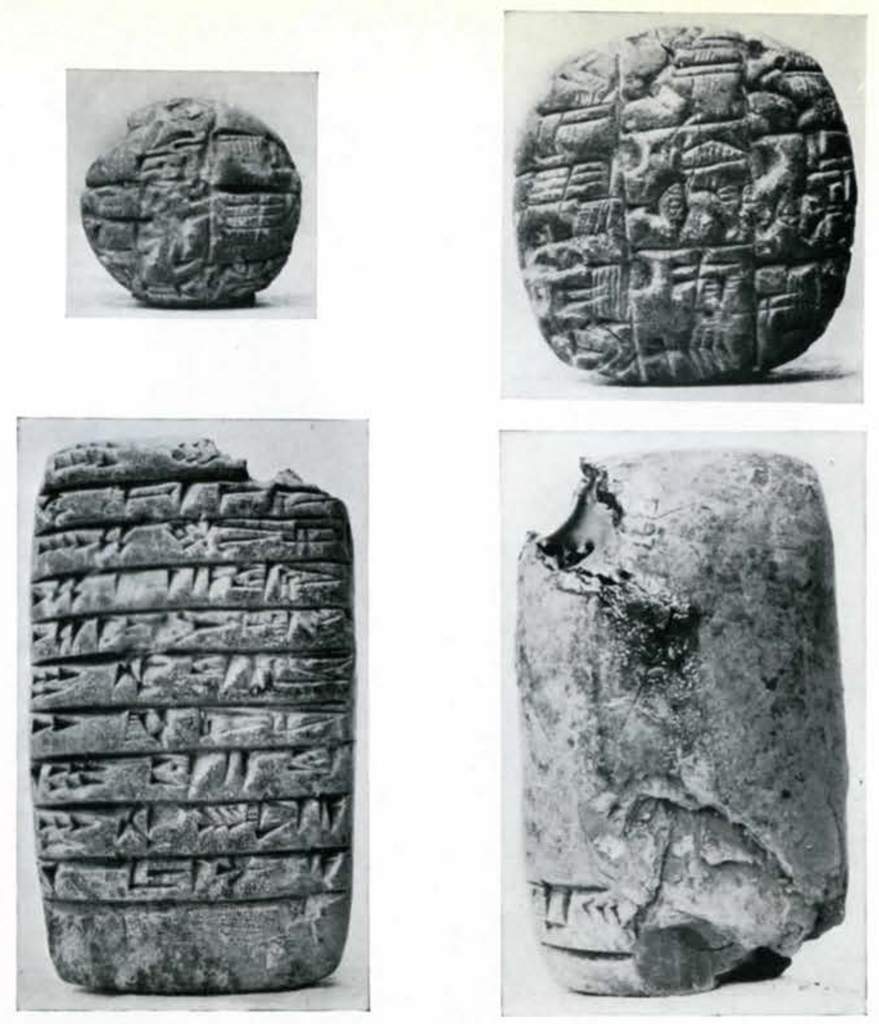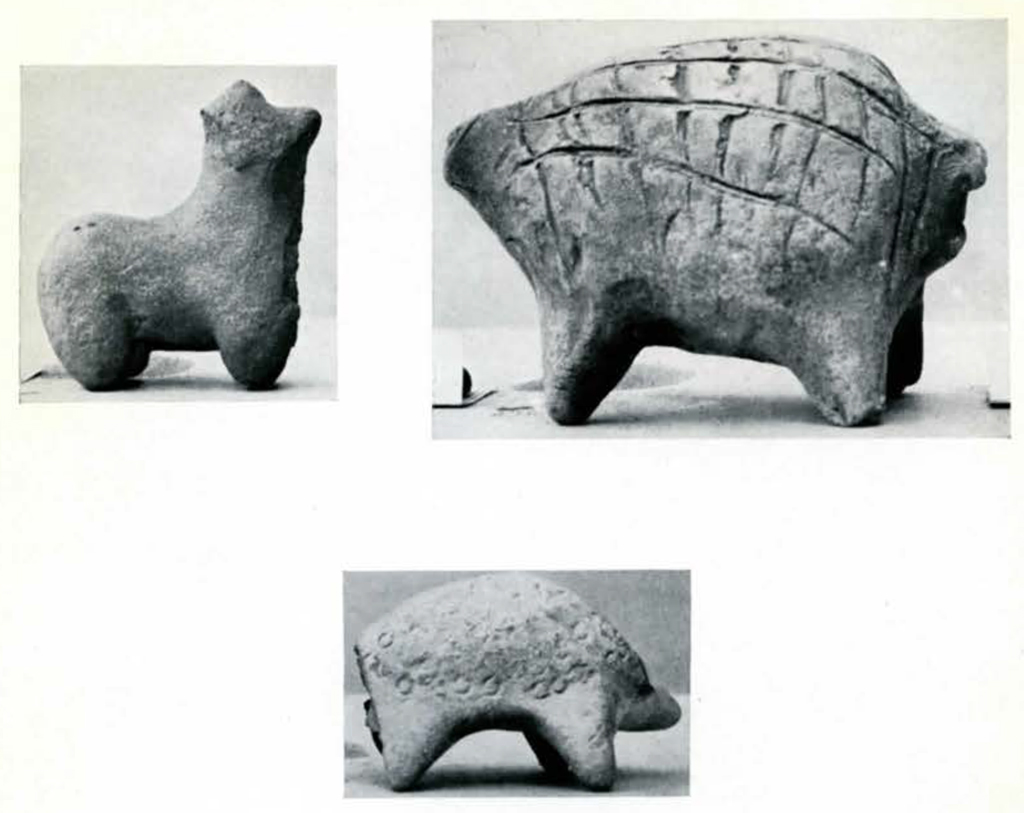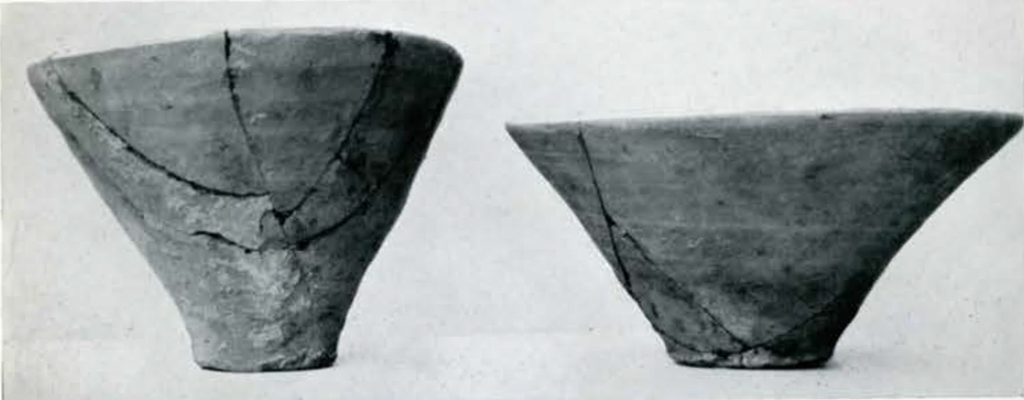[Note: The following report is printed just as it was received from Dr. Schmidt in the field. Being a preliminary report, therefore, it contains certain conclusions tentatively drawn that further detailed study of the material might alter, and occasional instances where statements require further elaboration and documentation. it is now published, with the author’s concurrence, in the belief that it is a primary duty to make available as soon as possible the results of an archaeological undertaking so that others concerned with related studies may benefit by the evidence. It is also felt that Dr. Schmidt’s account of the excavations at Fara gives an unusually clear and interesting picture of the conduct of archaeological work, which will merit the attention of the more general reader.
Al the close of the short season at Fara, Dr. Schmidt with his staff removed to Persia, where he initiated excavations al Damghan, on behalf of the Joint Persian Expedition sponsored by the University Museum and the Pennsylvania Museum of Art. The extremely interesting results of the first few months’ work will be published in a forthcoming issue of the Journal.
It is anticipated that Dr. Schmidt will resume work at Fara during the coming winter.]
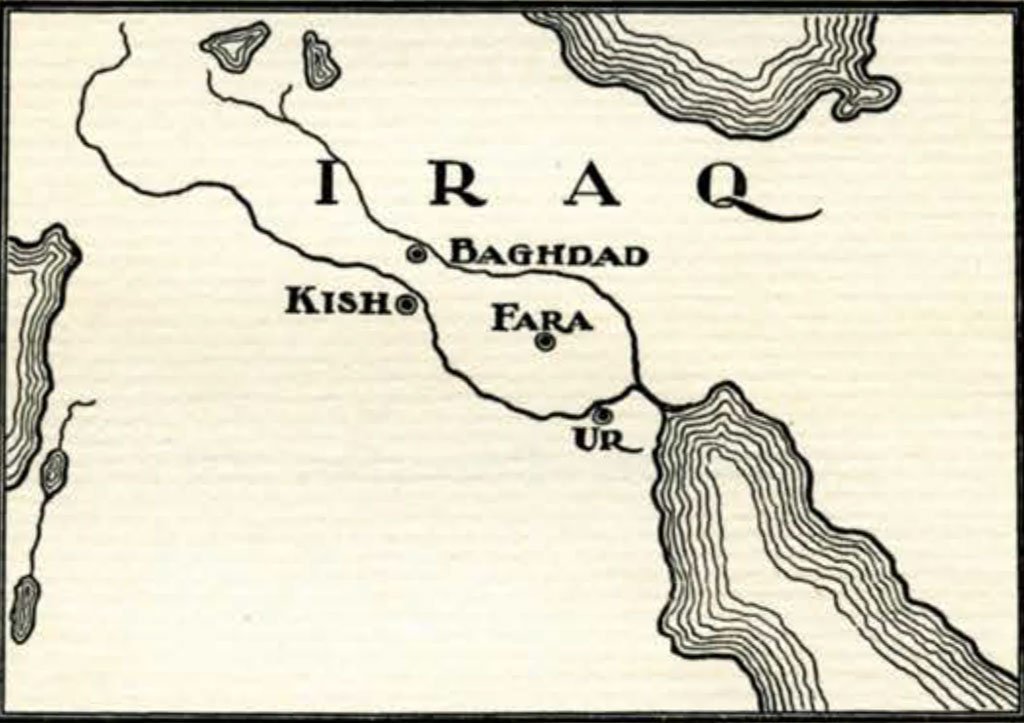
IN our memory Fara camp will live on as a strange, forlorn spot in the Mesopotamian desert. We shall think of the furious sandstorms sweeping across the alluvial plain and hurling barrages of dust on camp and mound. The weather beaten walls of our temporary house trembled for days under the assaults of the gales. Our makeshift canvas roofs were torn to shreds. Bricks thudded down from the crumpling wall tops, the contours of which were fantastic in the fog of dust and sand. Though blinded and maddened at times by the continuous raging of the elements we tried to work on, and it rarely happened that the whistle sounded announcing the end of the day’s work—and resignation for the lime being. The situation became catastrophic only when sandstorms were followed by cloud bursts at night. There was little sleep during such times. Everybody stood by and protected records, objects and tents. Thus nothing was destroyed and the next morning saw tragicomical scenes of “housecleaning.”
The climatic conditions delayed the completion of the test about two weeks. It was fortunate that relatively quiet and sunny days toward the end of April speeded the last phase of the work, namely the final drafting of surveys, the drawing and photographing of specimens, the detailed scientific cataloguing, the combining of all information gathered, and so on. In this connection, the division of labor may be explained in short. The organization of the work and the recording of objects, architecture, and burials, was in the hands of the field director, who was aided in every phase of the expedition’s activities by Mr. Derwood W. Lockard. The latter took care of the entire office work also. Dr. S. N. Kramer, an Assyriologist of the University of Pennsylvania lent to the Expedition through the courtesy of the American Schools of Oriental Research, worked up the considerable number of cuneiform tablets that appeared during the test. Mr. Erskine L. White together with Mr. Kurt Leitner made the maps of the excavated structures and the surveys on the mound, as far as they were necessitated by our plot system supplementary to the former German surveys made by Drs. Andrae and Noeldecke. The two surveyors made also the cross-sections of pots and the drawings of sherds in addition to various other duties. For a period of about ten days we hired a Mr. Bessinger from Baghdad to photograph our specimens. Baba Georgis was an efficient and industrious foreman.
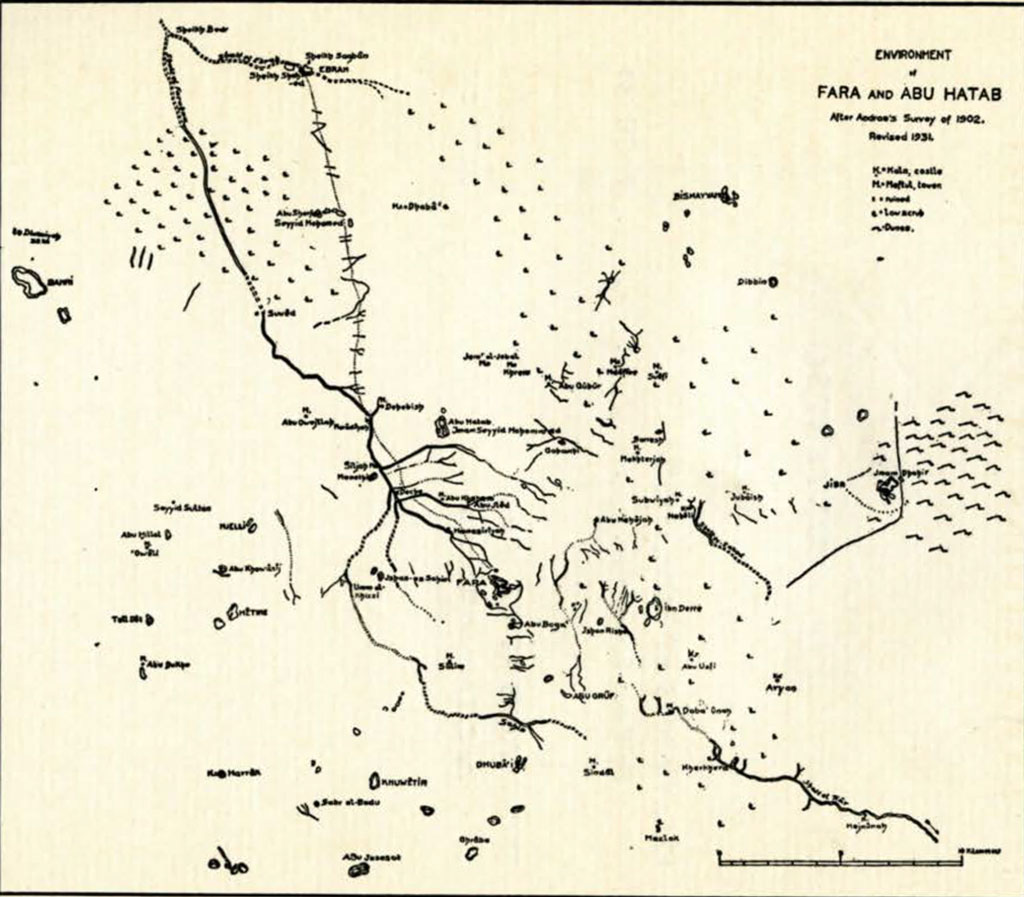
Image Number: 243976
The laborers were an untrained lot of Arab tribesmen of the Derre division; but, as usually, after a time a few excelled and could be used for more delicate jobs. Two sub-sheiks of the Derre tribe had to be employed for diplomatic reasons, as foremen. The same position were also held by a town Arab from Afej. The rest of the crew was divided into pickmen, hoemen, and basket carriers. At high season a hundred and forty men were on the payroll, while the average crew was about seventy men. Only a few boys were employed as basket carriers. The workers left their women in the villages or in the small town of Ebrah, twenty-three kilometres away, where most of them had their homes. While they were in our employ they lived in semi-subterranean, circular, wind shelters near our camp. Now and then they sang their monotonous tunes or they danced a wild “hosse” when coming from the mound after the end of the day’s work. Many of them had probably fought in the rebel army of 1920; but they are peaceful now, and besides that, the “big birds,” meaning airplanes, now and then roaring above the desert, inspire their respect for the Baghdad government.
Excepting Dr. Starr, no Occidental visited the out of the way tell during our stay. Once in a while an official from Ebrah or Afej appeared and once a group of boy scouts, neat and well trained little chaps, from Ebrah, came with their teachers to look at the diggings. We transported them in our truck, and gave them some sweets and tea. They had a good time singing their national songs, waving their flags, and looking at the skeletons in the trenches.
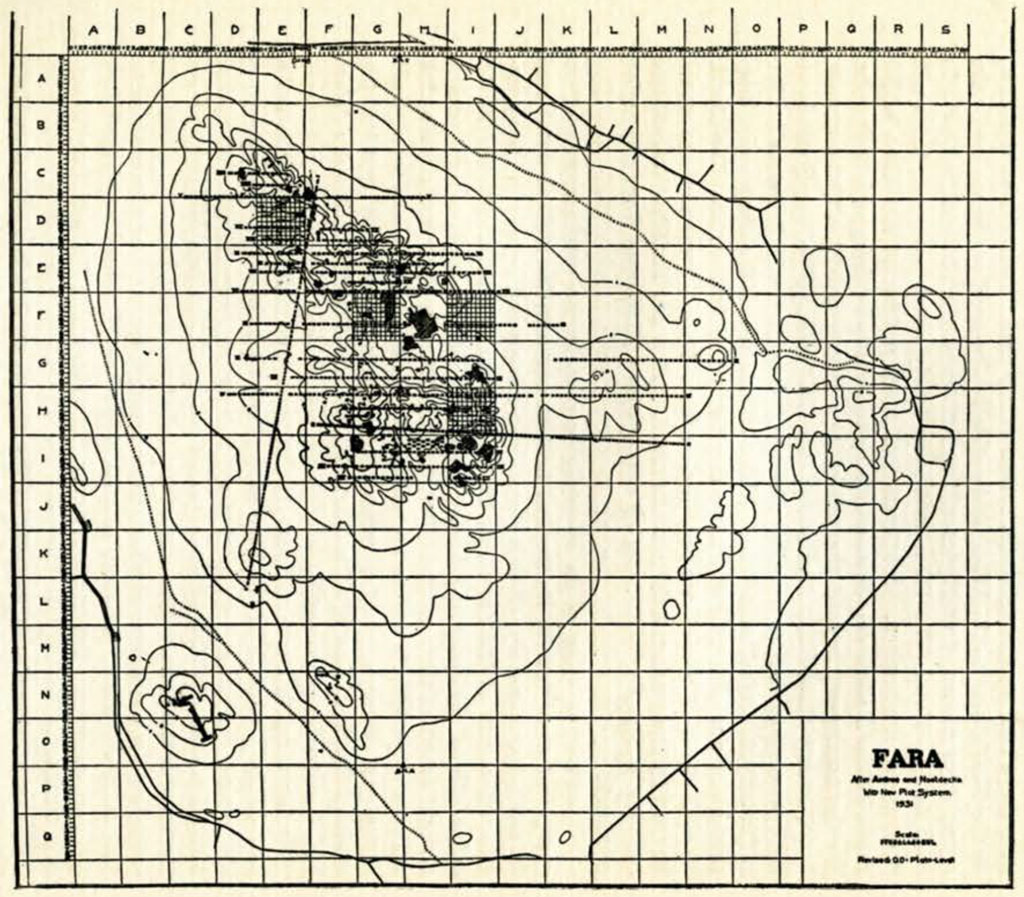
Image Number: 243977
The Fara Mound and Its Environment
The Fara landscape as seen from the crumpling “parapet” of the camp tower or from the mound top, is almost depressingly monotonous. As far as the eye can see the yellowish brown sandy desert stretches to the East, to the North, and to the West, and suddenly drops off at the horizon. On sunny days dozens of whirligigs will march across the plain and a few tells such as Abu Hatab, Ibn Derre and some lonely watch towers or kalas will float above the horizon. Scattered dots mark patches of low scrub which grows in the shallow depressions turning to swamp in times of inundations. To the northwest, beyond the tell of Abu Hatab lies Ebrah, the nearest town, twenty-three kilometres away; but the “mileage” of the Ford shows thirty-one kilometres as traveling distance. One hundred kilometres further is Diwaniyah, our railroad base. About 300 metres off the camp a dirt heap marks the rim of a well which we dug hoping to find water. We struck ground water at 9 metres below the surface; but it was salty and could be used by the workers only to make bread. Thus our Ford had to continue carrying water over a distance of twenty-three kilometres from the region of Ebrah.
However in spite of its inhospitable climate, its sandstorms, and its sporadical cloud bursts, its tropical heat in summer, its lack of water and its monotonous scenery, there is a certain greatness and beauty in the apparent endlessness of the desert, in the playfulness of its mirages and in the colors painted by dawn and dusk. Last, not least, the archaeologist prefers an arid desert climate to any other, because there is at least a chance that remains of perishable nature are preserved while moderate moisture speeds the process of decay. In this respect the Peruvian coast and Egypt and the caves of the Southwest are the most ideal spots. The Mesopotamian desert is still somewhat “too wet.”
Returning to our watchpost on the tower and looking south we see a part of the panorama of the Fara mound spread before us. Close to camp the ground gradually rises, until about 250 metres away the marked mound formation starts, which at some points reaches 10 metres of height above the level of the plain. The map of the tell shows a rough oval, its long axis extending for a distance of about 1800 metres from northwest to southeast. The main elevation, however, is only about one kilometre long and about 550 metres broad. Several lower elevations rise inside the periphery of the ruin territory.
The unattractive appearance of the mound surface has been described. The German excavators, Drs. Andrae, Baumgarten and Noeldecke, members of Koldewey’s Babylon Expedition, had turned a great volume of the mound deposit during their successful excavation in 1902-1903, but they did not have the means to remove the excavated dirt. Thus the original profile of the hill has changed somewhat, considering the numerous depressions and elevations due to the excavations. However we emphasize again that large scale operations can start and proceed while a sufficient number of lorries carry off the old dump soil.
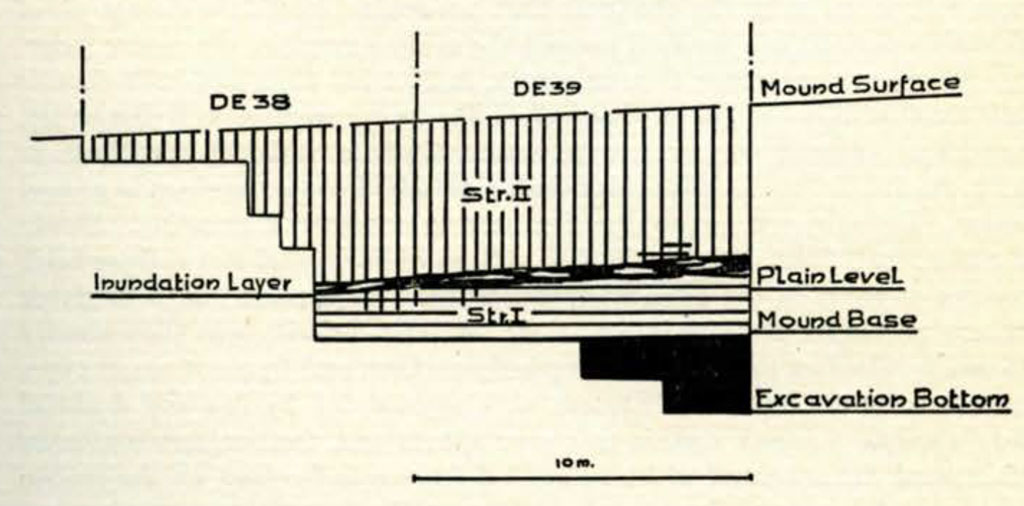
Aims and Methods
For the sake of the information as such and in order to determine whether large scale operations would be advisable, we were to test Tell Fara as to the depth of its deposits, the duration of its inhabitation, the sequence of cultures and their inter-relations and as to its archaeological and historical importance in general.
The character of the task and the shortness of the season combined determined the process of the test. We had to concentrate our efforts on a few selected spots and we had to apply a “fine screen” method to catch all that information which would otherwise be obtained with more ease by the repeated checking during large scale operations. In contrast to the trenches of the German excavators the very lengths of which indicate that they concentrated on the upper layer of the mound, we divided the tell into 100 x 100 metre quadrants which were subdivided again into 10 x 10 metre squares, or excavation units. The great extent of the ruin territory and, at the same time, the size of our task is emphasized by the pathetically small dots on the map marking the seven test squares from which the following information and objects have been obtained. In one square only, and inside a circular brick shaft, we had time to penetrate to the mound base. However, we shall explain below that even such limited excavation plots can furnish a reliable miniature cross-section of extensive deposits. For the sake of curiosity we may mention that the main elevation of Tell Fara covers an area of about 3500 ten by ten metre units while the total ruin territory is spread over an area which includes about 14,000 of our excavation squares.
All test plots (DE 38, 39; FG 42, 43; FI 96; HI 47, 48, 58) were situated in the main elevation of the tell. The apices of the latter had been disturbed thoroughly. Thus the test sites had to be chosen at points of medium height (three to eight metres above the plain). In the twin plots DE 38, 39 we penetrated to the original surface which was 6.50 to 6.75 metres below the northeast corner of DE 39. However due to a technical reason, namely the removal of the dump dirt from the deep excavation, we had to terrace the ground and reached, finally, the virgin soil in little more than half a square (DE 39). The objects were recorded according to their depth below the surface or if possible according to their associations with structural remains and with burials. Thus we obtained in Plots DE 38, 39 a complete aeries of superimposed remains reaching from the mound surface to the base of the deposits and in the other test plots we gathered additional information about the historically most “communicative” upper strata of the tell.
In order to give an idea of our recording system we may follow the way of a pot from the ground to the complete record. The vessel is first mapped in the plot sketch together with its associations and find-spot data and receives its current find number within the plot. Then important specimens are photographed. If they are associated with burials, additional sketches are drawn. Washing and mending if necessary follow. In the evening after the end of the excavation, the finds of the day are entered in the field catalog. For the sake of speed and in order to keep everybody informed about the progress of the work, the whole staff takes part in the event. Leitner washes the specimens, Schmidt enters them in the current catalog and dictates at the same time to Lockard who types the filing card series, while White numbers the objects. Detailed descriptions of pots are entered during the last phase of the season on special blanks forming the final record together with drawings of designs, cross-sections and photographs according to scale. In spite of the team work the cataloging lasts until about 9:00 P. M. on many days, while the whistle calls at 6:00 A. M. for the start of the excavation. Following the customs of the country we consider Friday the day of rest and use it for laboratory work.
The instrumentarium for the excavation proper includes large and small picks, shovels and trowels, baskets, whisk brooms, bellows, paint brushes of various sizes and a set of “raspatoria,” that is, surgical scrapers ideally fit for delicate work, at burials for instance. Paper boxes and bags were made to order in Baghdad. We could not afford a field railroad for our small test, but at some future time we hope to get a compressor which would clean the architectural remains with regulated currents of air at a great speed. Other equipments such as cameras, photographic scale apparatus, surveying instruments, have previously been described.
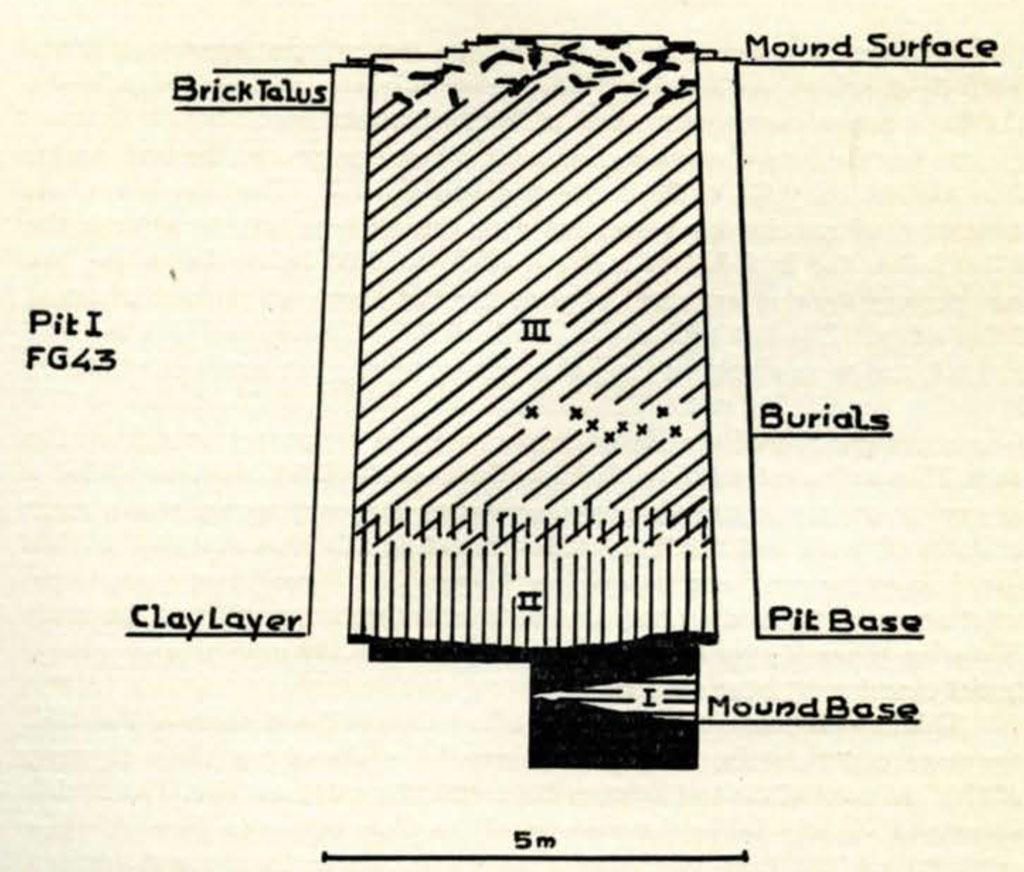
The Excavation
The excavation began on February 23 with forty workers; but their number soon rose to one hundred and the time sheets show the maximal crew of one hundred forty-one workers for the period from March 6 to 19. Then the crew diminished gradually until, towards the end of April, thirteen of the best men only were left for the detail work.
The first test plots were DE 38, 39.1 Here we gained an idea of the immense fertility of the Fara deposits. Almost directly below the thin surface layer of loose, dust-like dirt, appeared the first rich burials of the Early Sumerian period. A drainpipe also reaching nearly to the surface [Plate H, 2] contained dozens of the valuable archaic tablets which had been discarded by their owner. Many pottery vessels, some alabaster vessels, seal cylinders and other objects of pottery and stone appeared. Specimens of bone and metal were rare. The structural remains of the upper layer were insignificant and badly preserved.
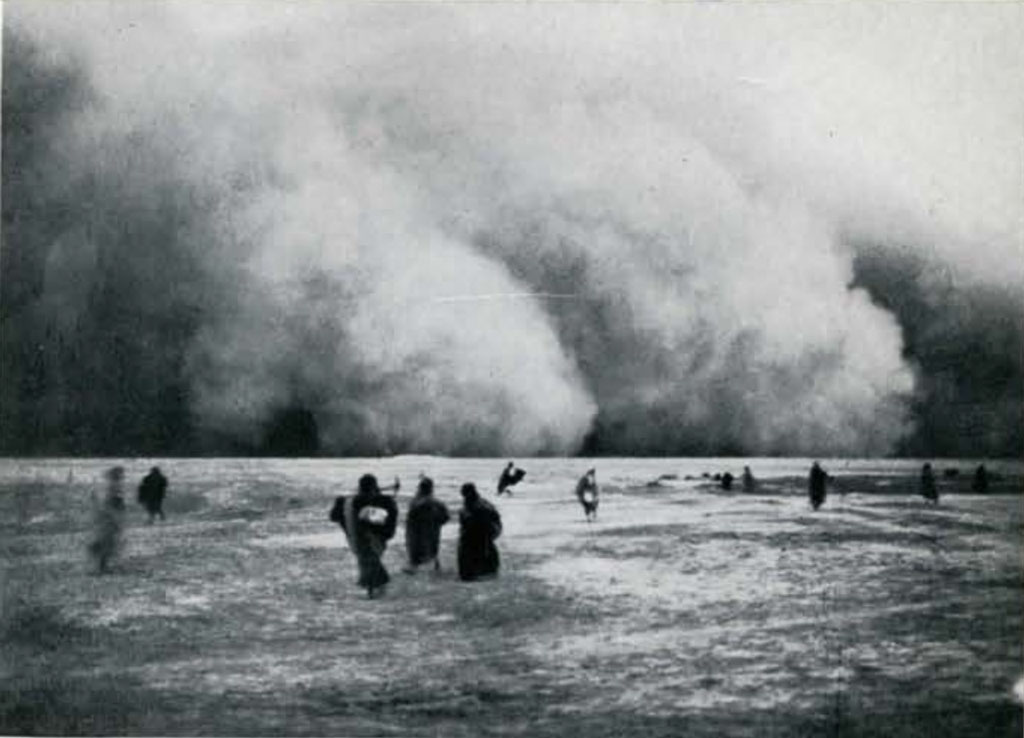
Image Numbers: 101320A-101323A
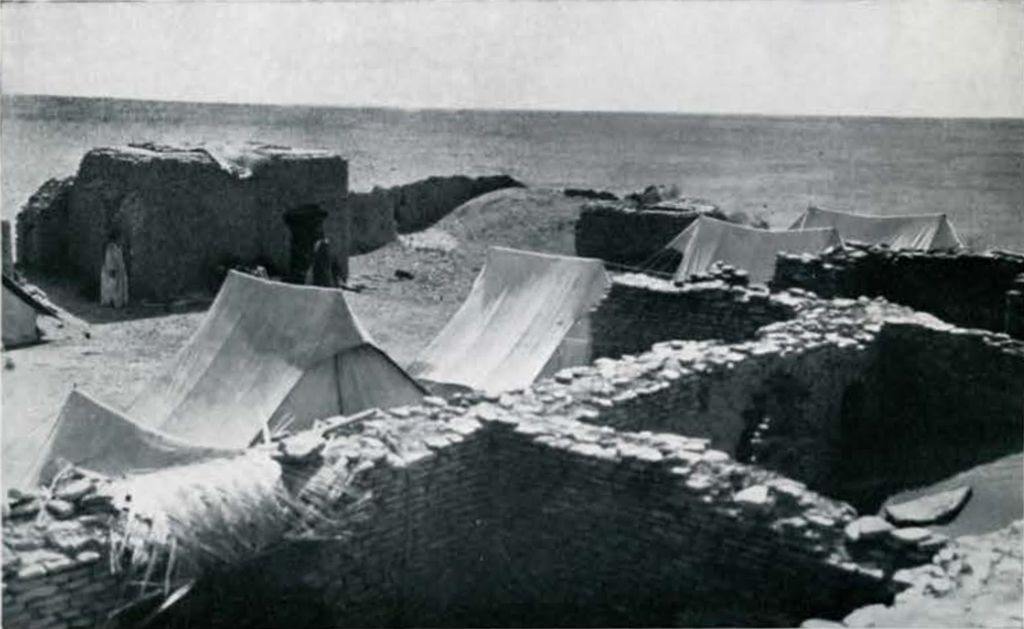
Image Number: 243838A
When the base of the first definite occupational level was reached at an average depth of 1.0 to 1.70 metres below the surface, the entire crew was transferred to the next test site, Plot FG 43, which was soon expanded to include FG 42. The excavation proceeded here while the maps and the cross-sections of the first test were made, and while the burials and the architecture were worked up. The general run of the finds in Plots FG 42, 43, was about the same as in DE 38, 39, though one archaic tablet only occurred. However FG 42 gave us our artistically most striking finds, namely three labels with impressions of seal cylinders, two of which are perfect examples of the Sumerian stone cutter’s art. In Plot FG 43 we were fortunate enough to strike a segment of one of the “round constructions” the purpose of which had puzzled the German excavators thirty years ago [Plate III, 1]. Of course we decided to excavate the circular construction and we found the immensely interesting information about Fara III which will be described below. Again many well equipped burials occurred in FG 42, 43. Storage pots were frequent in the relatively well defined building remains. The crew was soon split up into small groups working in the individual rooms. When the space became crowded a new test site, Plot FI 96, was started and after the upper level of DE 38, 39 had been worked up by the staff, part of the crew again returned to the first site. In Plot FI 96 our collection of Early Sumerian objects was again increased, but no burials or particularly striking finds occurred.
In Plots DE 38, 39, the remains of the upper occupational level were now removed except for the western half of DE 38, and the excavation was carried down to the base of the next architectural level, about 2.70 metres below the surface [Plate III, 2]. We were prepared to find a culture change; but we watched in vain. There was no traceable change of pot forms, or other archaeological features between the uppermost remains and those found in the floor of the second main level. But we found now no more cuneiform tablets. Extensive excavations would show whether tablets are associated with all sublayers of the archaic Fara stratum (II). The lowermost tablet found during our test occurred at 1.30 metres in Plot HI 48. Thus we are certain that all our tablets belong to a late phase of the Early Sumerian period.
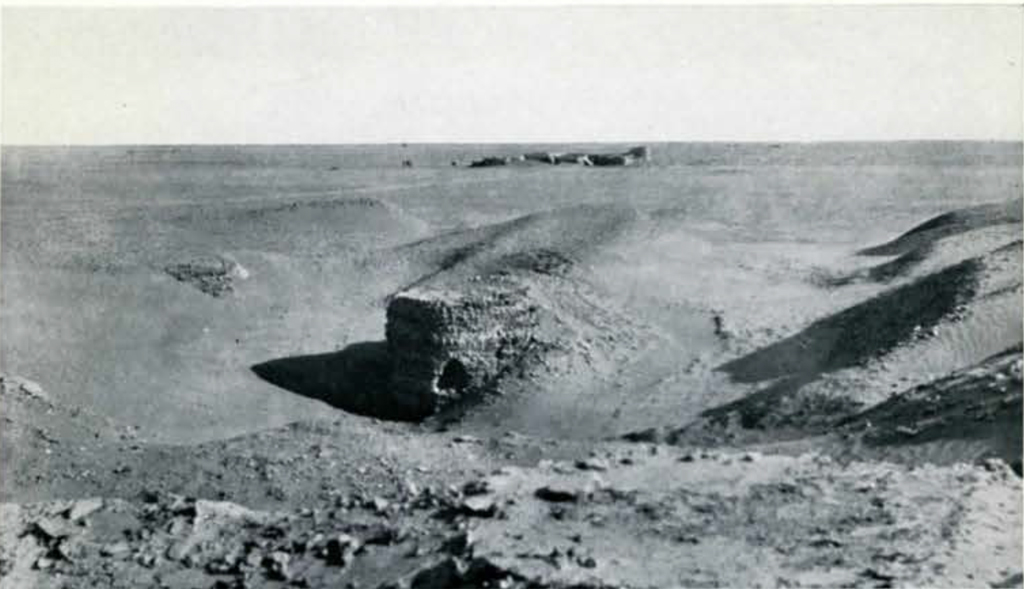
Image Number: 243857A
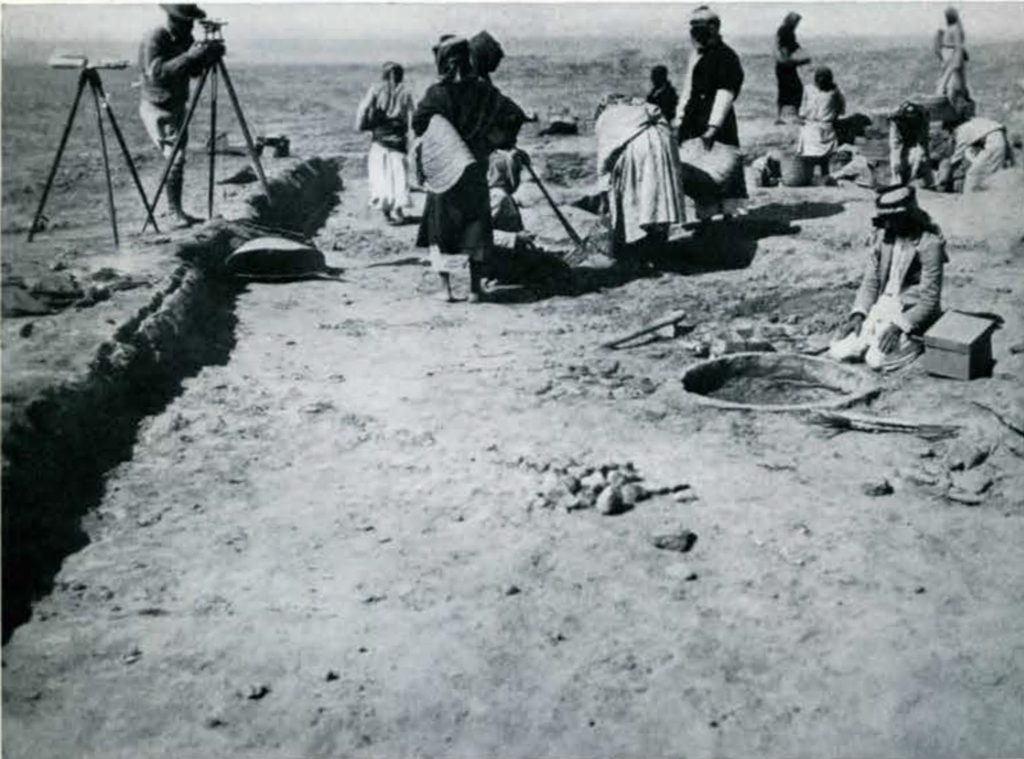
Image Number: 101400A-101405A
There was a well built baked brick foundation on the second level of Plot DE 39. Its base marked the bottom of the second excavation phase in this test site. Perhaps the most significant though humble find in the layer under consideration was a potsherd, a polychrome fragment of the Jemdet Nasr period, occurring at 2.0 metres of depth. It was the “herald” preparing us for the situation which we were to find about 3.0 metres below.
At this point of the excavation Plot HI 48 was started in order to test the southern section of the main elevation. Soon the adjoining halves of Plots HI 47 and HI 58 were added [Plate IV, I], because the test spot proved to be extremely fertile as to cuneiform records and all other types of objects of the Early Sumerian period. In addition, our information as to the burial methods of this time was increased by the finding of several coffin burials together with mat burials, a fact which had been noticed already by our predecessor Dr. Andrae.
At the same time the clearing of Pit I in Plots FG 43 continued. There was quite an excitement when, at an average depth of 4.5-5.0 metres, skeletons appeared. Altogether eight burials were here discovered. The story of this pit requires a special chapter and it will be told in reference to Fara III the last stratum of the mound, the distance of which was determined in this very construction.
The rest of the absorbingly interesting work of making a miniature section of the large tell and of interpreting its stratifications took place in Plots DE 38, 39. Steadily the excavation proceeded. By now, the wares of the Early Sumerians of Fara had become old acquaintances of ours. At a depth of three and four meters our principal guide vessel, a rather unattractive bowl in form of an inverted truncated cone, still occurred about as frequently as below the surface. The same was true for other vessels, such as a pitcher with spout, and other series of objects. Gradually however, painted potsherds increased. A second polychrome sherd was at 2.90 to 3.10 metres of depth and below four metres painted sherds became rather frequent.
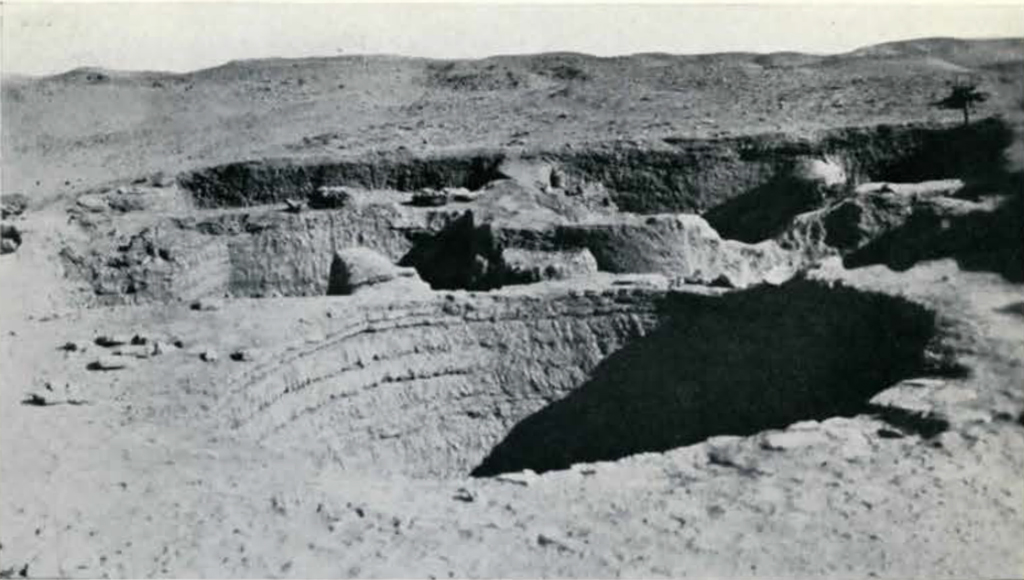
Image Number: 243864A
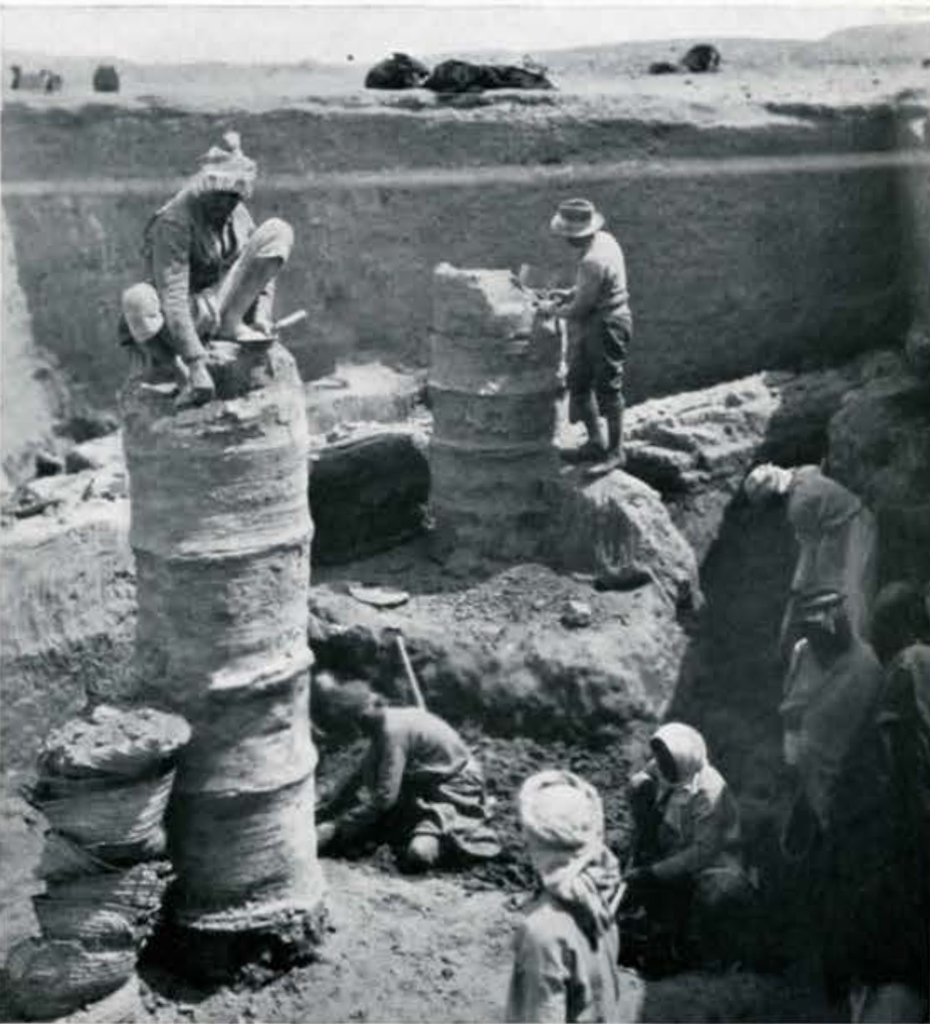
Image Number: 97521, 101337A
Now we encountered a situation which to us was the most dramatic phase of the test [Plate IV, 2]. Fluctuating on a level between 4 and 5 metres the soil turned almost sterile. Yellow dirt, a mixture of clay and sand, appeared everywhere. Potsherds and particles of ashes, the “last straws” of the archaeologist, became rare. According to the tell cross-section we were close to the level of the plain and the dirt had very much the appearance of virgin soil. We must admit we were disappointed for one of our principal aims was the determination of the assumed “painted pottery” stratum, which would prove the high antiquity of Fara and check to a certain extent the legendary history of the site. The scattered painted sherds found above the sterile layer were not yet quite frequent enough to let us speak of a definite painted pottery stratum. As things were, most laborers were taken to the other test plots and two small groups only were left in DE 38, 39, in order to make sure that we had actually struck the mound base. Admittedly we had little hope to find culture remains below the yellow dirt. However, as the two soundings proceeded, here and there a potsherd appeared, keeping our hope alive. Then, odd as it sounds, we made the most significant find of the test; an ordinary patch of charcoal and ashes about 60 centimeters below the top of the clay and sand layer. It was clear at once that we had struck a definite level of human inhabitation. The crew was virtually “hurled” back into the plots. Everywhere we encountered the same situation: below the layer of definitely alluvial soil, dark colored culture refuse appeared, and imbedded in this culture dirt we found the first rather complete polychrome vessel in situ. We had struck the Jemdet Nasr stratum of Fara. Many more vessels of new and very attractive form emerged from the extremely fertile culture deposit of this period, together with stone vessel types and numerous other objects which were different or lacking in the upper strata of the tell. At last we bad found the “culture break” which we had expected above; but we must state that it was not complete. On the same level with the attractive Fara I vessels, we found rows of single and inverted bowls of the rather ugly Fara II (Early Sumerian) type and quite a number of sherds which we were not able to distinguish from those fragments above the inundation layer. In addition we found very archaic seal cylinders and stamp seals of scaraboid shape in the same layer. In the description of the individual series’ of objects and in the final chapter of this report we shall refer again to these important points.
The test approached its completion. A few valuable burials of the painted pottery stratum were uncovered. Some decorated two color sherds and certain pot forms appeared which may suggest the presence of a still earlier deposit of the Painted Pottery Age at Fara, namely the al’Ubaid. Again, these pot forms and rather simple geometrical decorations may prove to occur during both periods. We struck virgin soil at a depth of 6.50 to 6.75 metres below the mound surface, and .90 to 1.55 below the level of the present plain. Experience had made us cautious. Thus we sounded the totally sterile clayey dirt to a depth of 9.50, three metres below the base of the culture soil at that particular spot. But there was no more charcoal, no more hope.
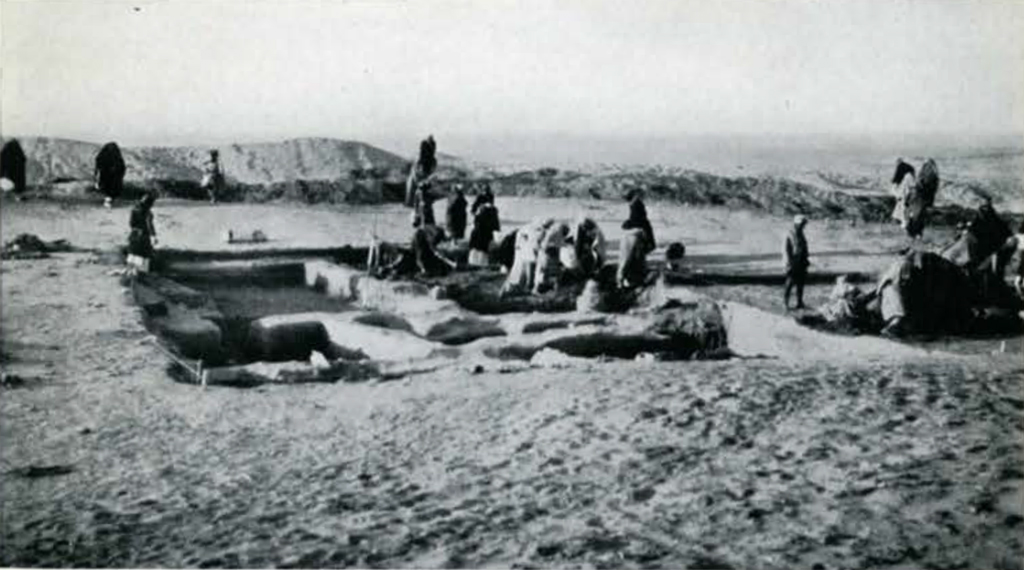
Image Number: 101357A, 101358A, 10166A
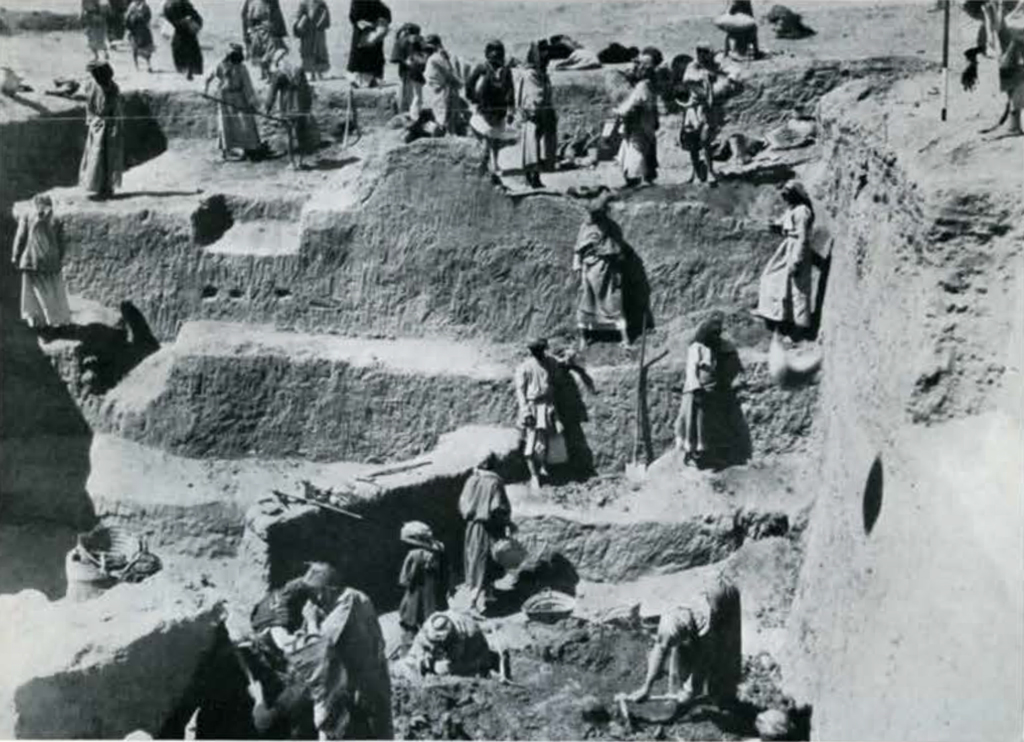
Image Numbers: F295b, 85578, 243845A
Fara III: The Period of the Third Dynasty of Ur
It sounds impertinent if we state that the story of Stratum III has been told to us, so far, by the trash that has accumulated in a storage pit of an earlier period; but we shall present the evidence and let the reader judge.
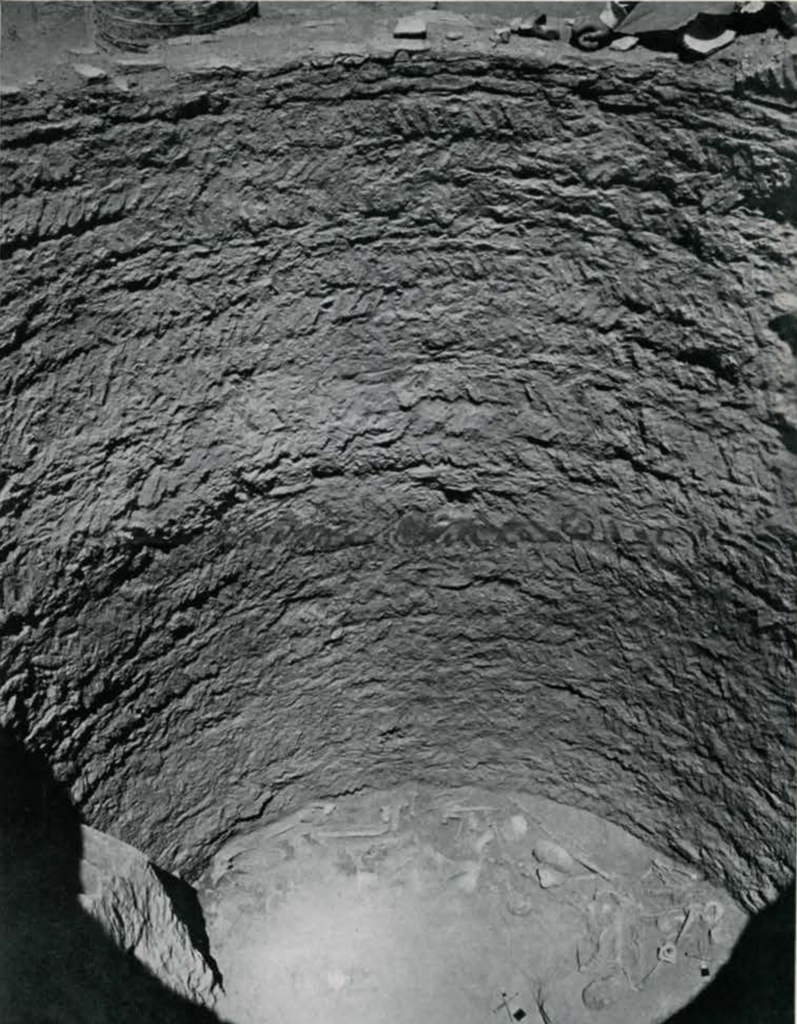
Image Numbers: 243867, 243868
We mentioned above that we struck, in Plot FG 43, a well-built circular construction of baked bricks, that looked like an exaggerated well [Plates HI, I and VI. At first it was a matter of conscientiousness rather than enthusiasm when we decided to clear the brick shaft that might end somewhere in ground water. But after a time the situation became extremely interesting. Slowly the inner wall front with its pleasing pattern of horizontal and oblique brick courses emerged as the excavation proceeded. Days passed without giving us any particular finds or information; but our curiosity was then already roused by the fact that the monotonously uniform and frequent vessel types uncovered in the other test squares were represented by few and doubtful sherds only. Instead, certain unknown spouts and, further, bowls with an elaborated rim appeared which resembled fragments frequent on the surface of Abu Hatab, seven kilometres from Fara. The first clue was given to us, and our working theory during this stage was that the construction, built of rather unusual bricks, belonged to the “Abu Hatab period.” Abu Hatab had previously been found to be more recent than Fara. Then, events came fast. At an average depth of 4.50 metres a series of burials, eight in all, appeared [Plate VI, 11. There were skeletons of men, women, and children that had been buried in the impressive setting of the huge brick cylinder. We thought we had found the purpose of this puzzling construction, namely that of a communal mortuary cist. It was self-evident, however, that the final proof would not be found until the base was struck. The rather well preserved though disorderly disposed of skeletons were recorded and removed with much care. Now the improvised stairway leading down to the burial layer was cut off to get every information from the cist filling, and men and dump dirt were from then on transported by means of a derrick.
While the skeletons were taken out we made an interesting find, namely an attractive boat-shaped vessel, which, of course, in our irreverent mound idiom was called “The Ark” [Plate VII, 1]. The “Abu Hatab type” of bowl [Plate VII, 2] continued to appear beside and below the skeletons thus indicating the relatively late period of the burials. But the second and most significant criterion for the chronological definition of the pit filling, of the burials, and as we shall see, of an entire postulated mound stratum, was the discovery of a complete, though broken, and a fragmentary cuneiform tablet, .20 metre above the skeletons [Plate VIII, 2]. According to our Assyriologist, Dr. Kramer, there is no doubt about the later character of these tablets, as compared with the archaic tablets of Fara. The two tablets under consideration belong to the period of the Third Dynasty of Ur, that is, 24th to 23rd century, to be exact, “The year when GIMIL-SIN became king” as one of the tablets states. All the other cuneiform records uncovered during our test belong to the Early Sumerian period (about 29th to 27th century).
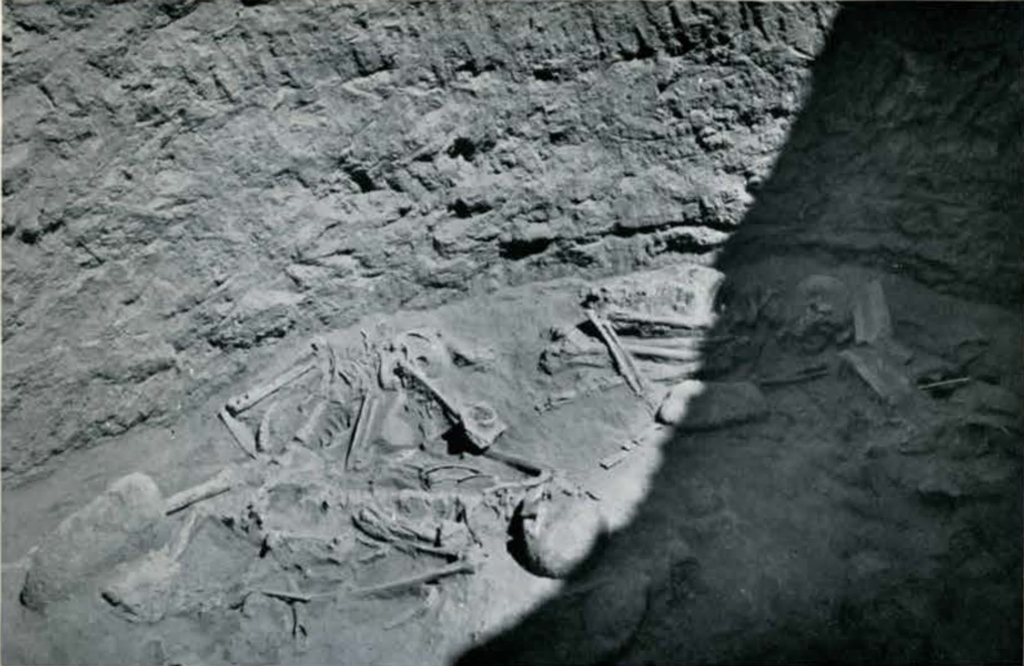
Image Number: 243870
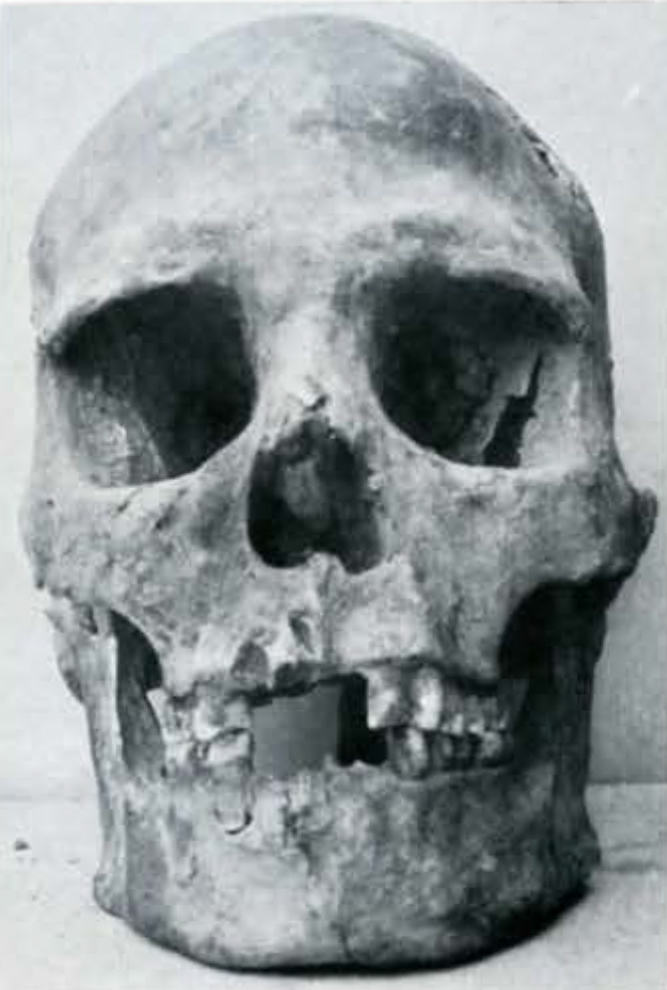
Image Number: 243794A
The third criterion was given to us in form of several attractive pottery figurines [Plate IX] of a type which had not yet appeared during the test. In Legrain’s valuable publication, Terracottas from Nippur, we found no definite parallels to our figurines; but the character of the latter suggests a period later than that of the Early Sumerians.
The fourth significant find was, finally, a seal cylinder impression [Plate VIII, 3], showing a seated deity with adorant (?), a symbolism, according to Dr.Legrain, not occurring on seals of the Early Sumerians.
So far the late character of the pit filling was proved beyond doubt. Now the critical point of the excavation had arrived. The questions were: what kind of remains are associated with the pit base, and how far is the latter below the burials? We dug down. At 5.20 below the orifice, the last pottery figurine appeared. Then the pot forms of the latter period faded away. The last typical rim sherds of Fara III occurred between 5.50 and 6.0, and were displaced from this point down by our omnipresent Early Sumerian pots. To make the contrast complete, a seal cylinder with a Gilgamesh pattern of the Early Sumerian period appeared at 6.20. The Fara II remains extended to the very base of the brick shaft and filled a dry refuse stratum containing floral specimen such as pieces of wood, seeds of dates (I) reeds and the like. Thus two of our theories exploded and we found facts instead: our impressive “Tower of Silence” had turned into what appeared to be a granary or similar storage construction of the Early Sumerian (Fara II) period and it was secondarily only used as a communal burial chamber by later settlers.
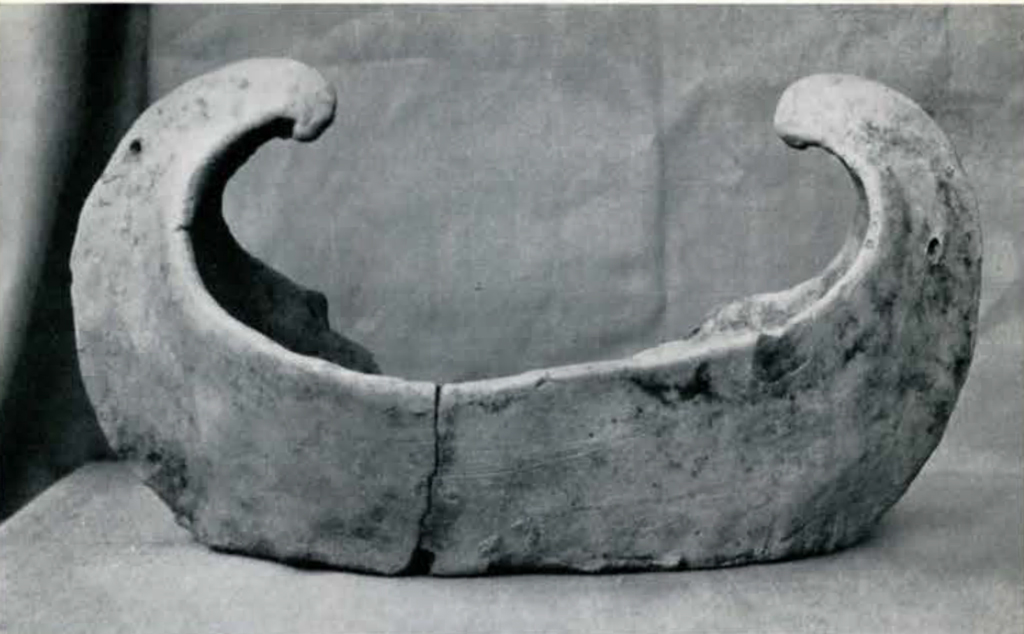
Museum Object Number: 33-13-607
Image Number: 72081
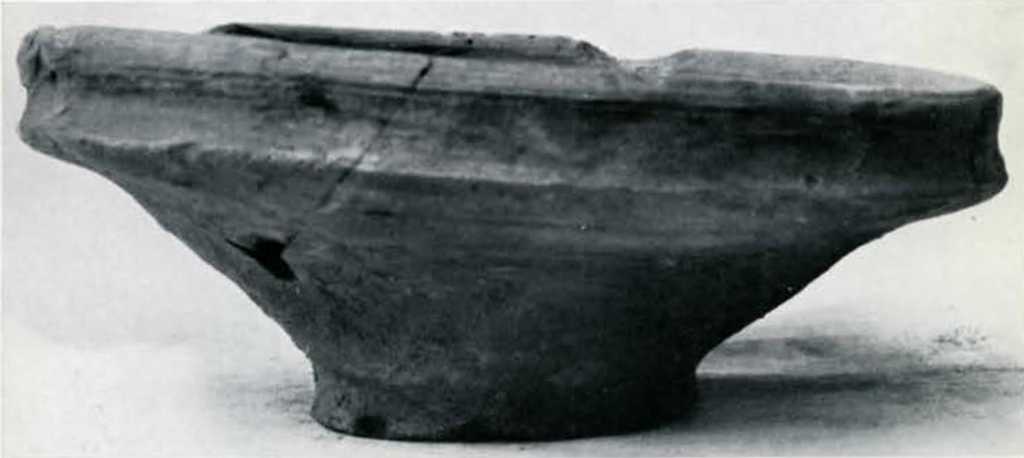
Image Number: 243934A
This at once raises the question: where then is the stratum of Fara III, the town of “Haladda, Patesi of Sukurru,” the site of the Third Dynasty of Ur? In none of the test squares did we find Fara III remains. All burials uncovered directly below the surfaces of the plots belong to Fara IL The original top of the Early Sumerian “granary” was actually above the present mound surface.
Thus the only archaeological clue for the presence of Stratum III is the filling of the brick shaft, while the philological evidence given by our two Fara III tablets is supplemented by the inscription found by Koldewey (Mitt. 16, D.O.G. p. 13). Here are our archaeological considerations: We do not believe that the numerous pot fragments contained in five to six metres of pit filling have been carried to this point from a distant site. This would seem absurd. The find condition of the tablets, the seal impression and the fragmentary figurines also suggest definitely that these objects had been discarded by persons living close by. We have no doubt that the Fare III town was considerably smaller than the flourishing and long inhabited settlement of Period II. The focus of the later town was perhaps near the outskirts of the extensive site, and individual buildings only extended to a point close to Test Plot FG 43 and the “granary.” At the same time we know that a considerable denudation of the tell has taken place during the millenia following the final destruction of the site, an event which may have coincided with the catastrophic end of the Third Dynasty of Ur, brought about by an Elamite invasion. At any rate, there is not the least archaeological clue for the presence of a culture stratum succeeding Fara HI, which we identified with the period of the last Ur dynasty, and, as to philological criteria, in later records the “town of Uto Napishtim” has become a legendary site.
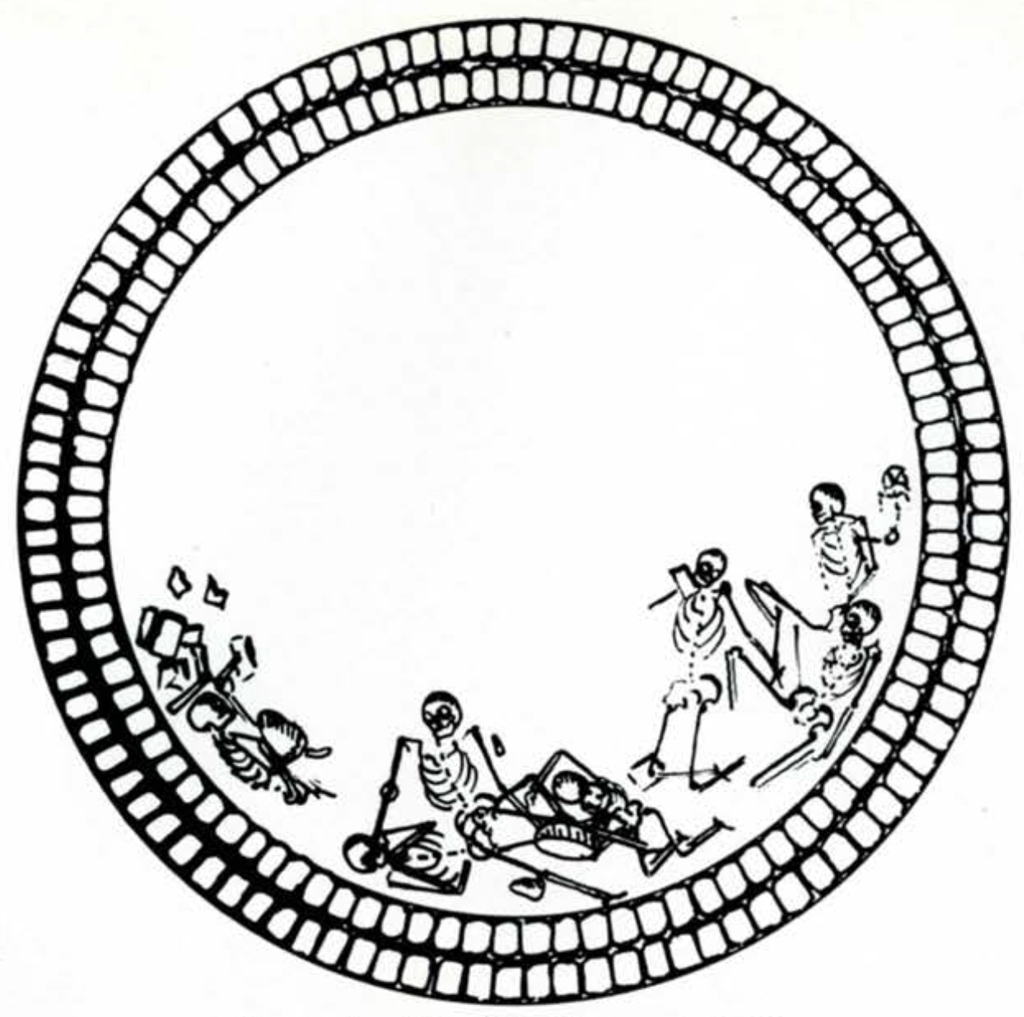
Image Number: 243986
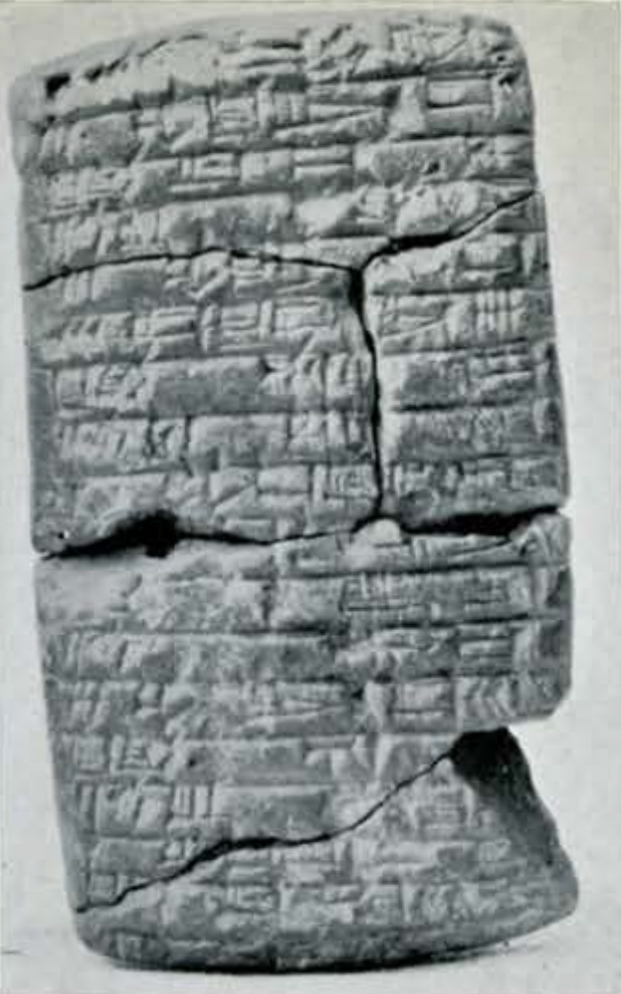
Museum Object Number: 33-59-87, 33-59-88
Image Number: 243928A
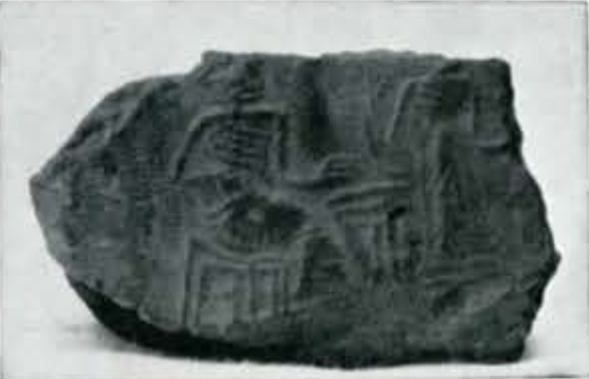
The Finds of Stratum III
Tablets and Seals:
All our objects of this period were found in the “granary” of Stratum H. Our seal impression, to be sure, does not have the elaborate pattern of Gimil Sin’s “portrait cylinder” shown by Legrain (Culture of the Babylonians, Plate XVIII), but its similarity to some of the sealing patterns of this period is striking.
The Pottery:
The pottery is always a faithful guide of the archaeologist. In the case under consideration, a relatively inconspicuous elaboration of the bowl rims gave the clue as to the chronological difference between Stratum II and Stratum III ceramics. The Fara III bowl [Plate VII, 2] has an offset rim which forms a definite “neck” while the Fara II bowl rim is always plain and straight. A certain bell-shaped spout with a thin perforation, and a colander spout are also characteristic for the later period. The attractive boat-shaped vessel [Plate VIII, 1] is a unique specimen and can therefore not be used as a guide object.
Figurines:
The delightful pottery figurines of “plaques” pictured in Plate IX will prove to be extremely valuable, after they have been studied and compared with other material. There are elaborately dressed and ornamented women with paraphenalia of divinity or royalty. A turbaned man is decorated with a broad necklace. Again there is a female (?) head with elaborate head-dress and the well modeled nude body of a woman. Some attractive animal effigies, a bull and dogs or sheep conclude the series.
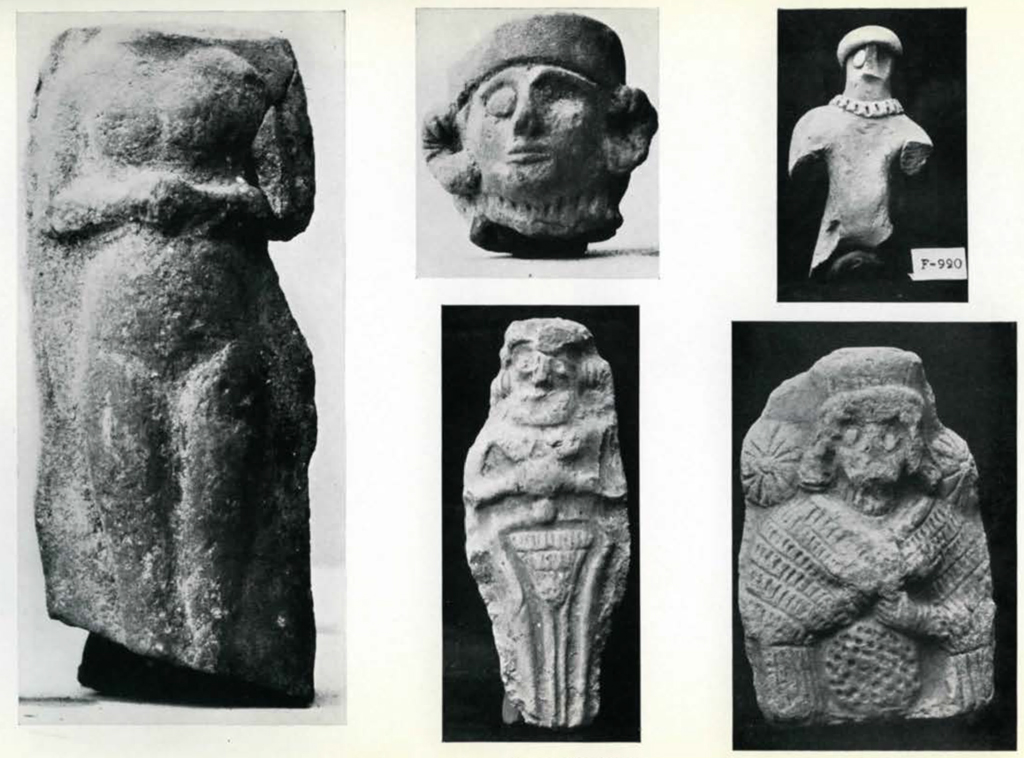
Museum Object Numbers: 33-13-609 / 33-13-610
Image Number: 101557A
Miscellaneous:
Except for a problematical bifurcated copper object and a part of an axe or adze of the same material, the remaining finds are not particularly striking. The scarceness of stone objects contrasting with the fertility of the lower strata may be accidental.
The Communal Burial:
A few words have to be said about the communal burial [Plates VI, 1 and VIII, 1]. The, refuse had risen to a height of about 2.50 metres above the base of the original “granary” when it turned into a cist by the disposal of eight persons. They were all buried at the same time or almost so, as proven in nearly every case by the interlocking of their bones and the lack of definitely disturbed burials. Nearly all skeletons gave the impression of hurried and unsympathetic disposals. Some were spread out on top of each other. A child was lying on its face. There was fight and again utter resignation expressed by the positions of some bodies. No mortuary vessels filled with food and drink for the life beyond had been given to them. There was not a single ornament. A few mullers only were close to some skeletons. It seems to us that these persons were either of an inferior social rank, or they had died during an epidemic, or similar catastrophe. In the latter case survivors other than members of their families may have gotten rid of their remains. The first consideration however, seems to be more plausible. As a matter of fact, if we had found an especially well equipped burial close to these skeletons or below them we would not have hesitated to suggest a sacrificial character for the communal disposal.
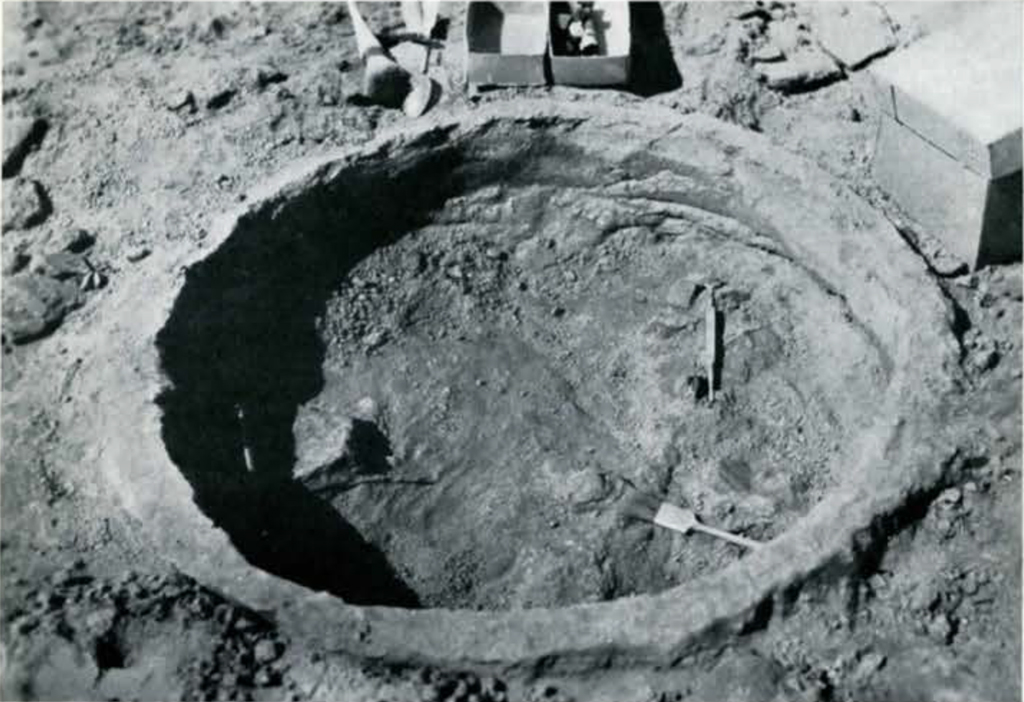
Image Number: 101406A
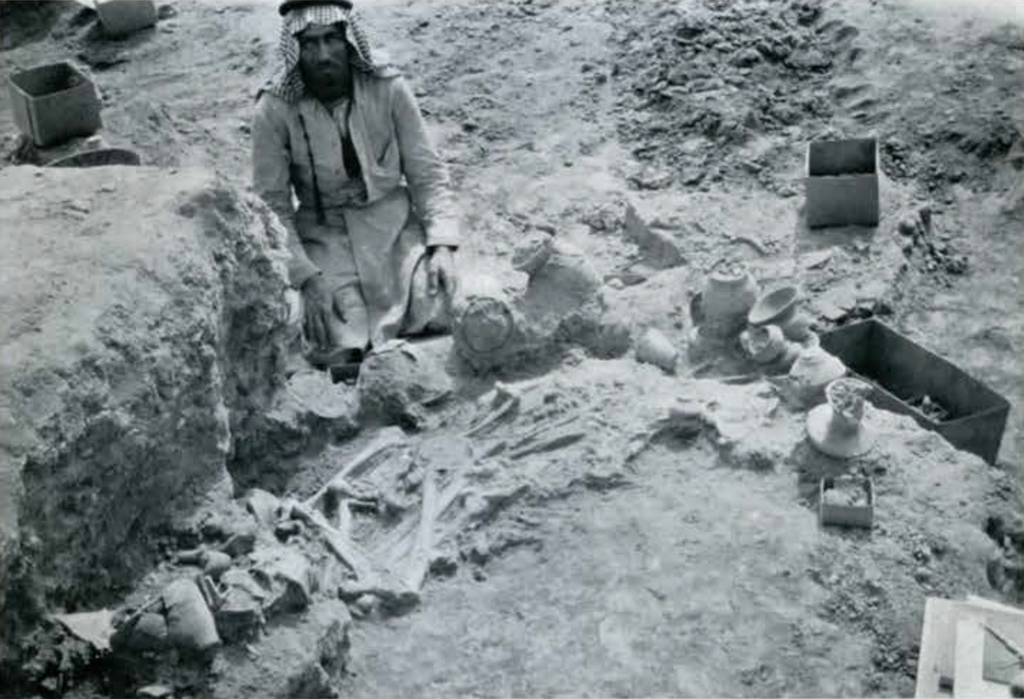
Image Number: 101374A
Fara II: The Period of the Early Sumerians
The great extent and the great depth of the Fara II deposit, in addition to the extreme fertility, proves that this period saw the climax of the mound’s life. Though we may assume that the site of the settlement fluctuated during its long inhabitation, as a rule it must have been large and wealthy. Wheresoever our test squares opened the surface they showed fertile culture dirt of Fara II, and the extraordinary depth of the deposits was determined in Plots DE 38, 39. Our experiences in this test site and in the other plots have been told above. We may therefore at once consider the contents of the stratum.
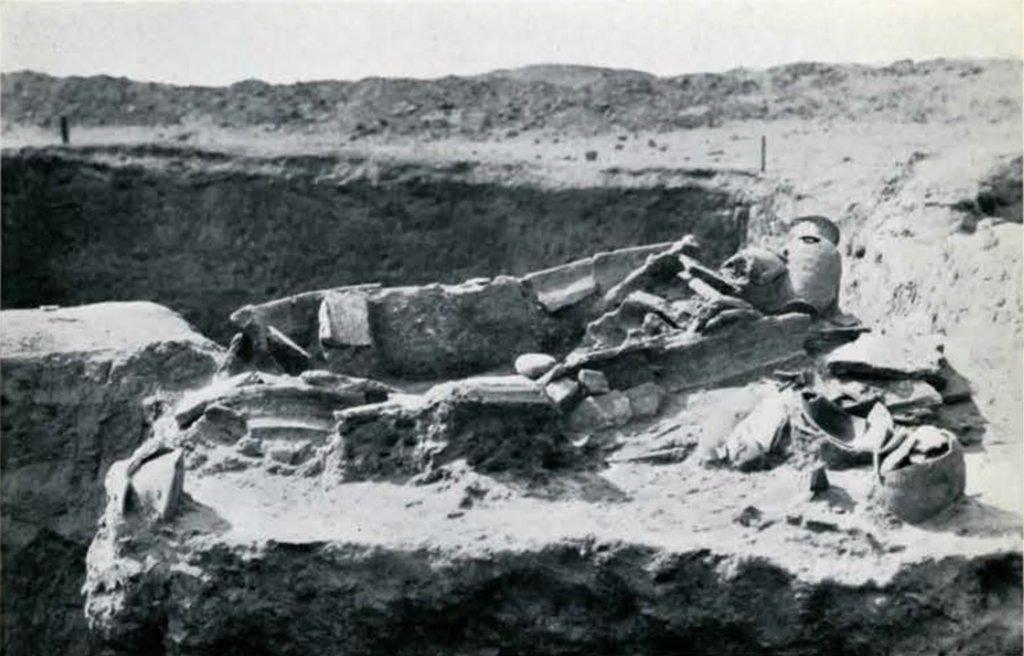
Image Number: 243874
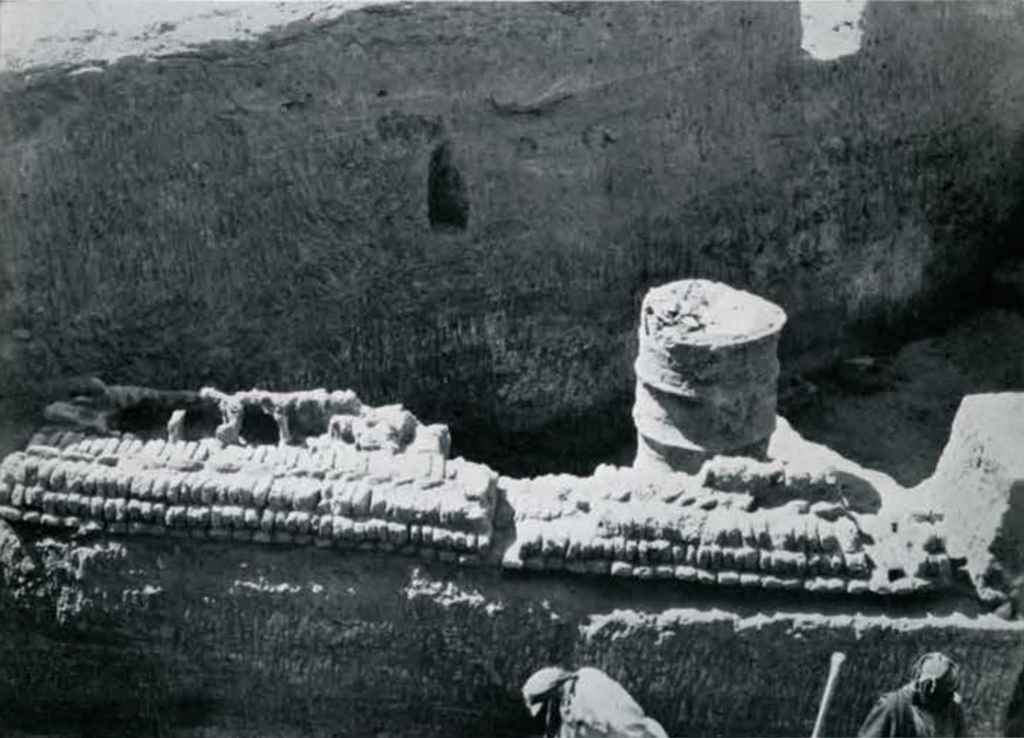
Image Numbers: 101338A-1-1341A
The Finds of Stratum II
Cuneiform Tablets:
Altogether eighty-five valuable Fara tablets of the archaic type are in our collection; some of these are shown in Plate XII. According to Dr. Kramer’s carefully made catalogue and commentary, nearly all are inventory records, one only is probably a school text. The inventory tablets mention various kinds of grain and flour, bread, several varieties of beer, skins, various woods, domestic animals such as dogs (p), lambs, sheep, oxen and the like. Servants are mentioned, further, official titles, such as “maker of good beer (?),” “dirt shoveller (P),” scribe, porter, and the like. The inventory tablets, according to Dr. Kramer, are records of objects given to or placed in the charge of certain individuals named. Nearly all tablets are bi-convex, square with round corners, or even circular. Slight variations occur. In our collection are tablets which certainly belong to the smallest records of this kind found so far. In all, only three tablets are baked, due perhaps to accidental firing.
The find conditions of our Fara II tablets are interesting. So far none occurred below 1.30 metres. A series of such records occurred in a drainage pipe, where they had been discarded [Plate X, 1]. This pipe reached almost to the very surface and above the floor of the uppermost occupational level. Thus we know that the original owners of the records lived in buildings later even than the last architectural remains traceable at this spot. This means that here, as at other points of the mound, considerable denudation has taken place.
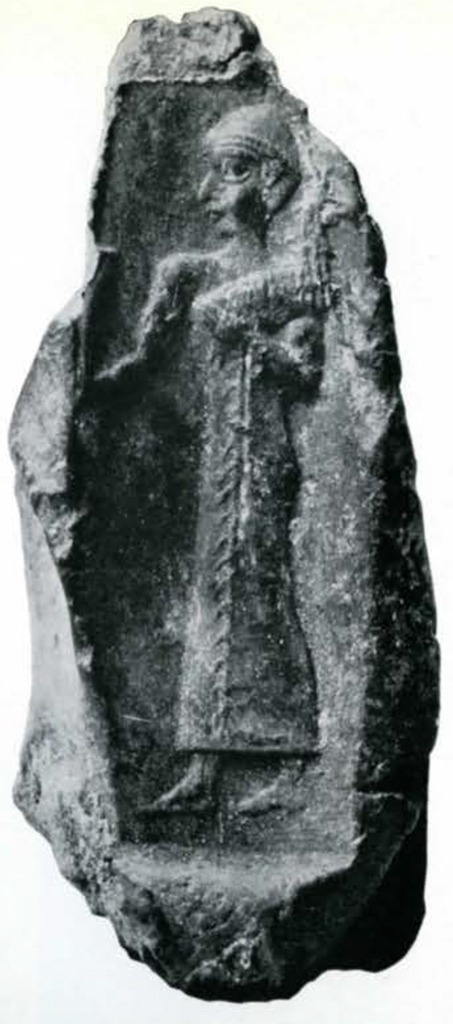
Museum Object Number: 33-13-557
Image Number: 140244
The Burials:
The same consideration concerns also, to a certain extent, the numerous burials found close to the mound surface. Far the greater part of the thirty-seven graves, uncovered in our few test plots, were above a depth of two metres and many were only a few decimetres below the surface. However, the occurrence of an unproportionally great number of burials close to the present surface cannot be explained solely by the denudation of the site. We believe with the former German excavators that a large portion of the tell has been used as a necropolis. During the latest phase of Period II the Fara settlement may have covered considerably less ground than during its climax, and the dead may have been disposed of outside the later Period II town but still inside the former city limits. We have little doubt that during all periods the dead were also buried within the buildings of the living, but the density of the uppermost Fara graves suggest a burial ground rather than individual room burials.
A few more words have to be said about the graves proper: In the same manner as our predecessors we were puzzled somewhat by the occurrence of two kinds of disposals, plain mat burials [Plate X, 2] and coffin burials [Plate XI, 1]. Both categories of graves were supplied about equally as far as our evidence goes with the same mortuary gifts of Period II. Our only explanation for the coffin burials is that they are graves of persons of different social status.
As far as traceable, the legs of all skeletons were more or less contracted. Most bodies had a lateral position; but no küble, that is, orientation towards a sacred or traditional direction, was noticed. Most of the burials had been generously supplied with vessels, such as bowls, cups, pitchers, and now and then with a stone bowl. Strings of beads were in several cases still clinging to the upper vertebrae and the mandible. The wealth of mortuary pottery made it easy for us to date the burials as to their period. In most cases we obtained our full archaeological information; but the extremely bad preservation of the bones made them hopeless for further anthropological studies. The pit burials of Period III form an exception. Several fairly good skulls and long bones of this series were preserved.
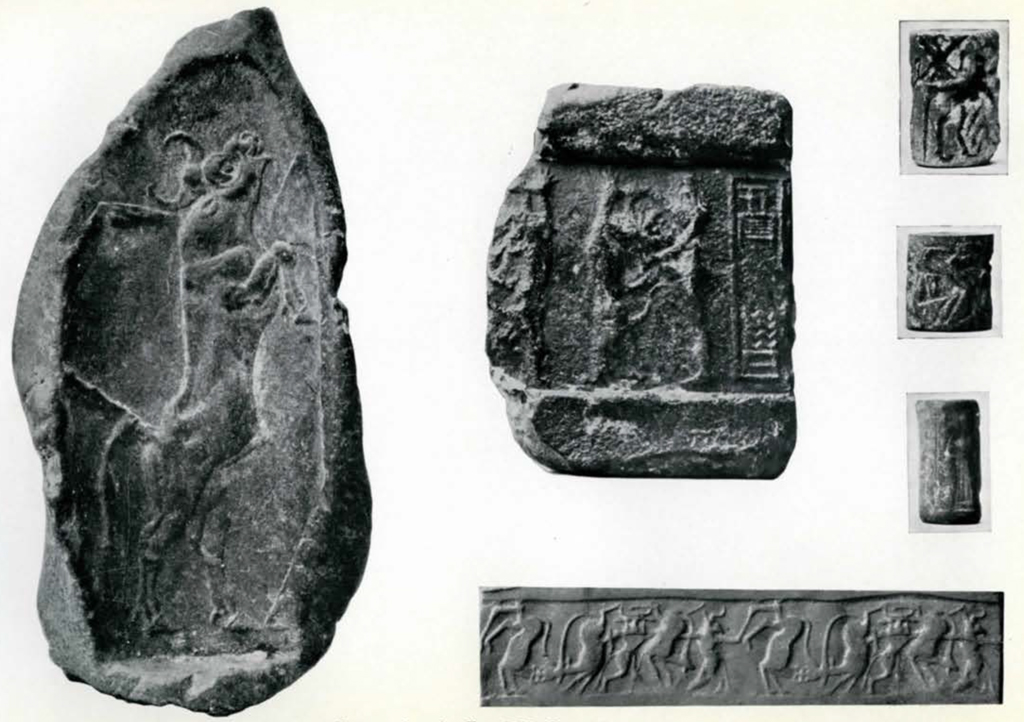
Museum Object Numbers: 33-13-552 / 33-13-553
Image Number: 101567A
Architecture:
As to the architecture of Stratum I, the limitations of our test kept us from uncovering complete ground plans of buildings. The forthcoming publication of the former work of Koldewey, Andrae and others at Tell Fara, will give us information about this point. Far the greatest part of the building sections excavated by us were built of straw-tempered, sun-dried bricks, the shapes of which, as far as traceable were plano-convex. Due to time, climate, and to a certain extent to inferior construction, the mud brick walls had suffered badly. It was extremely difficult, at times, to trace their contours in the crumpled down debris of the same matter.
However, we have explained above that the well constructed “granary” must be attributed to Fara II, and in Plot DE 39, another baked brick construction of this period appeared at an average depth of 2.50 metres. It was the well-built foundation of a mud brick wall or the remainder of an all-baked brick structure, secondarily used as a foundation. The relative difference in depth between the “granary” and this wall is also parallel by the difference of their building units. The bricks of the wall have different dimensions, and they are more pronounced plano-convex. Below the level of the brick foundation insignificant mud wall fragments only occurred.
Glyptic:
We now turn to the most attractive series of our finds, the seals and seal impressions. Plate XII, 1 shows one of our Fara II Sumerians. The beautifully modeled face is clean shaven. A skull cap covers the shaven (P) head. A long robe with lengthwise seam, falls from the chest to a point a little above the delicately wrought knuckles. Our Sumerian may be a part of a sacrificial scene. On his left arm he carries a young gazelle, while with his right hand he grasps perhaps the hand of another person. This figure is a fine example of the Early Sumerian stone cutters art. It is part of a seal cylinder impression on a dark gray clay label 39 millimetres long.
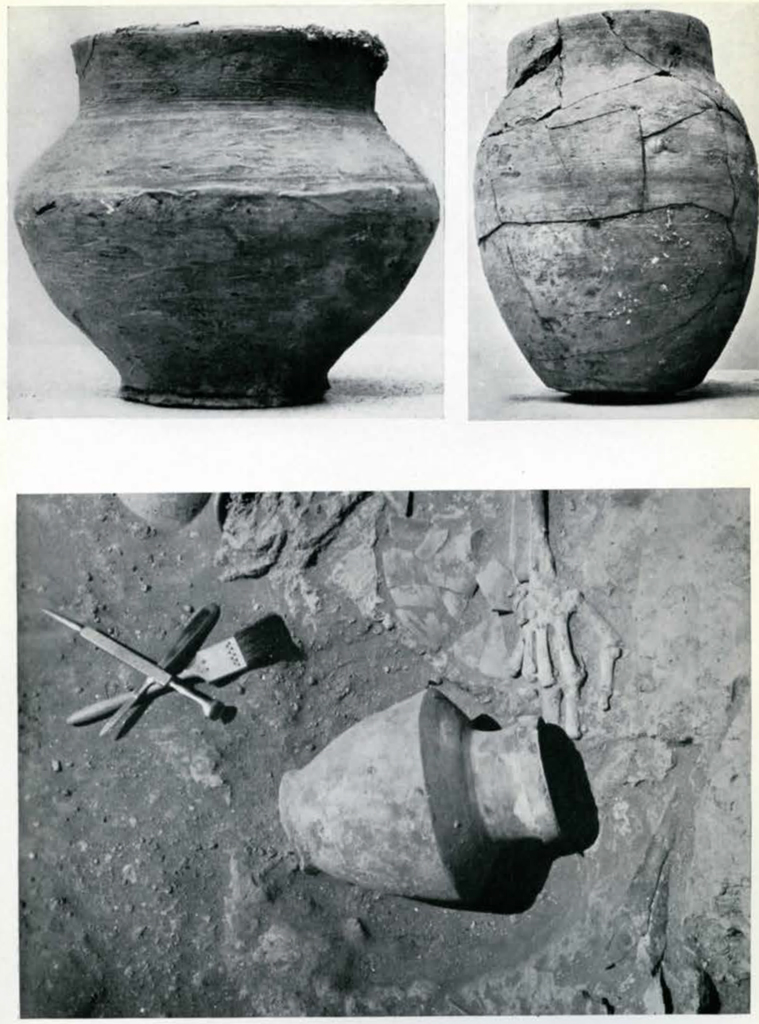
Museum Object Numbers: 33-13-228
Image Numbers: 101385A, 101413A, 101477A
The second example [Plate XIII, 1], a standing bull from a well known Gilgamesh and Ea-bani scene, is artistically still more perfect. Gilgamesh, the “Sumerian Heracles,” is probably grasping the bull at his neck and tail and the bull roars. The tree fragment reaching into the section of the pattern before the bull’s throat, may symbolize a forest in which the conflict took place.
Another label also shows a Gilgamesh pattern and a fragmentary cuneiform legend meaning “the scribe” while his name is missing. We add further some samples of Fara II seal cylinders and the impression of No. F-665. Our glyptical finds gave us one of the most significant clues as to certain sub-phases of Period II, and as to the relations of the Early Sumerians with their predecessors. We shall refer to these points in the chapter on Fara I.
Figurines:
There is no difference whatsoever between the funny little pottery sheep from Stratum II [Plate XIV, 1] and the sheep effigies of the Mesopotamian colonies in Asia Minor. But, after all, the shape of the fat-tail sheep suggests this conventionalization. Two more animal figurines [Plate XIV, 2 and 3] may represent a pig, and a turtle. We found further some attractive effigy pendants of stone. Human effigies may be present, but we uncovered only doubtful and crude specimens.
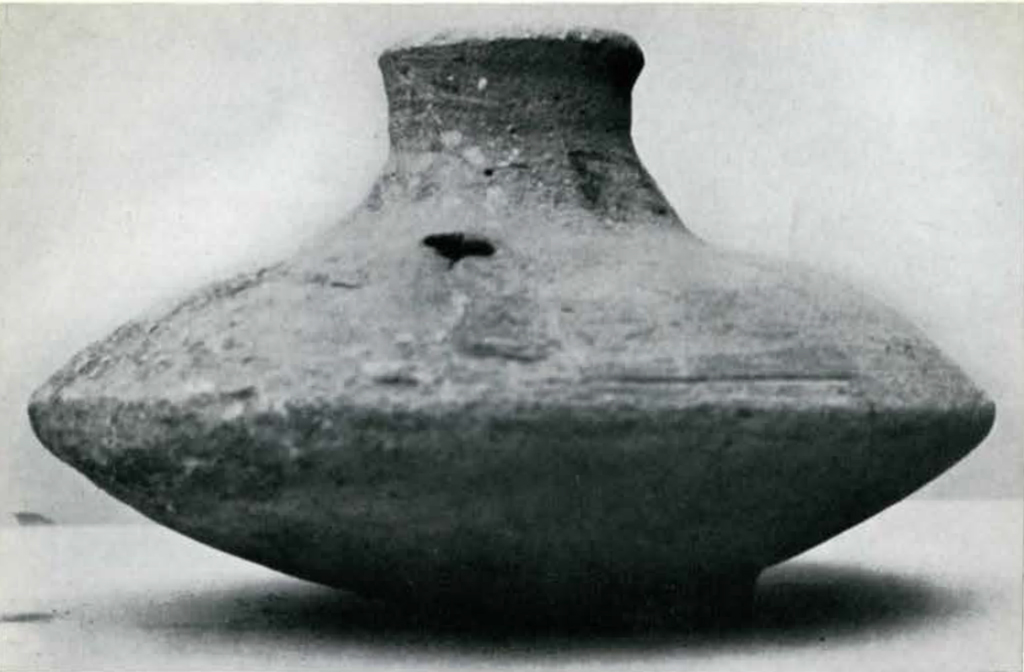
Museum Object Number: 33-13-445
Image Number: 101423A
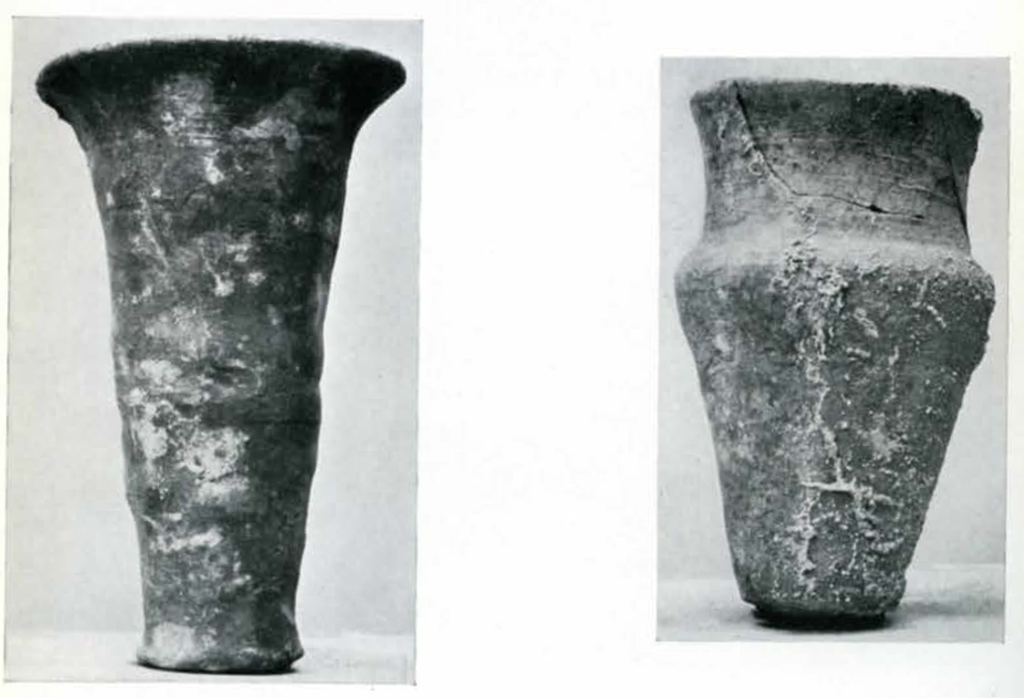
Image Numbers: 101441A, 101505
The Pottery:
A student of ceramics cannot get enthusiastic over the rather unattractive and crude pots of the Early Sumerians. There are only a few unique or infrequent vessels of pleasing form; but they cannot count as “guide fossils” of Stratum II.
The typical pots of this period are plain bowls in form of inverted truncated cones [Plate XIV, 4, 5], short necked cups with bi-conoid bodies and a flat disk base [Plate XV, 1], and short necked pitchers with oblong bodies and convex (1) bases [Plate XV, 2]. A more attractive variety of pitcher with overlapping rim, sharp shoulder and ring bottom is shown on Plate XV, 3 touched by the fingers of a skeleton. An odd shaped vessel with ellipitical cross-section, a knob handle and only one or two small perforations is also frequent. There seems to be a pellet of some material in one or two specimens. Therefore we called these vessels “rattles” for the time being
[Plate XVI, 1].
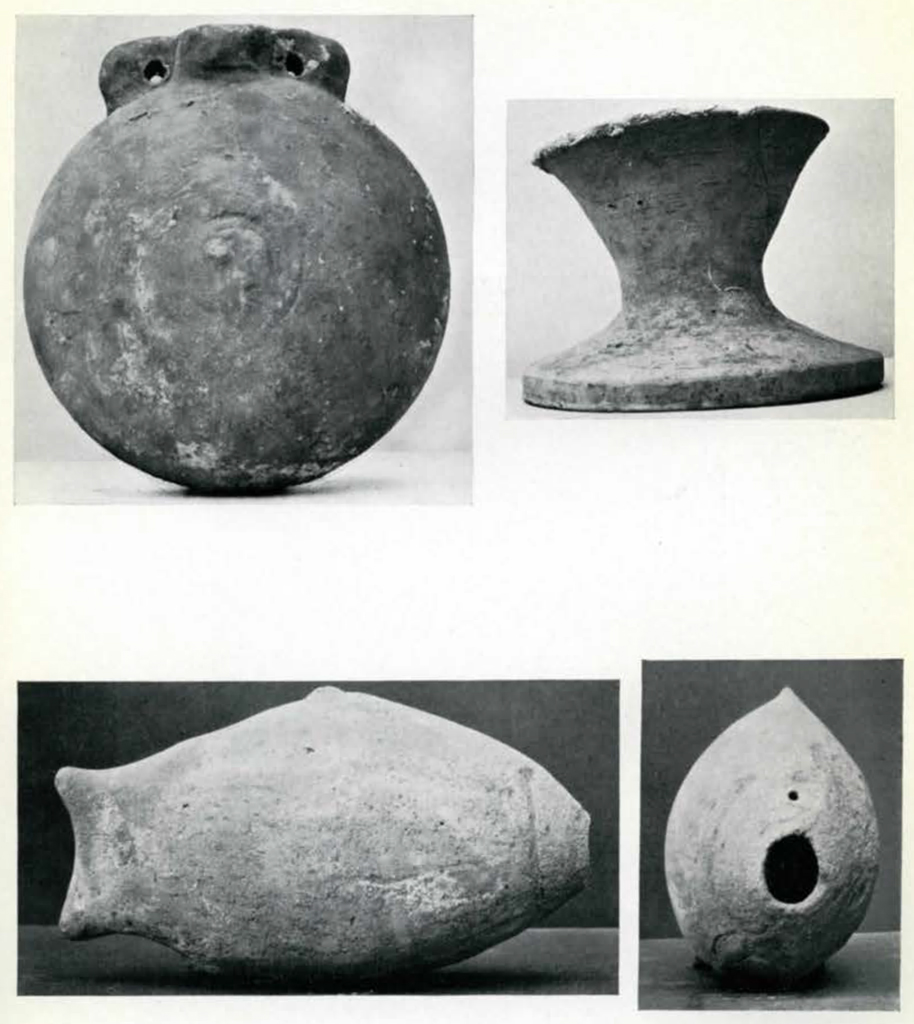
Image Numbers: 101452A, 101459A, 101475A, 101438A, 101440A
There are, further, vase-shaped pots, lopsided as a rule, such as shown in Plate XVI, 2, 3. The “hourglass-shaped” pots [Plate XVII, 3] might have been used as potstands, if one considers the long half as top part, or as plates with hollow bases if one prefers to turn the shallow, bowl-shaped half upward. Only a few specimens of this type occurred. There is further a pitcher with bi-lohed orifice and a perforation through the center of the neck. In our mound idiom it is called the “nursing bottle” because one of them Iay in front of the face of a child skeleton. The very appropriate and quite attractive canteen in Plate XVII, 1 has a laterally compressed body and two cord handles. This vessel type was noticed below 3 metres only; but we cannot definitely judge from our limited test area. The most pleasing vessel, finally, a fish effigy [Plate XVII, 2, 4], stuck right out of the mound surface about 15 metres east of FG 43. However we do not hesitate to attribute it to the late phase of Period H judging by the pot sherds that fill the find area. The “fish ” is quite naturalistically modeled. Its fins are sculptured or incised. The narrow aperture forms the mouth above which a small perforation is present.
Except for the doubtful fish vessel all other pots are wheelmade in the same way as the ceramics of the succeeding and preceding periods. The usual color is grayish brown.
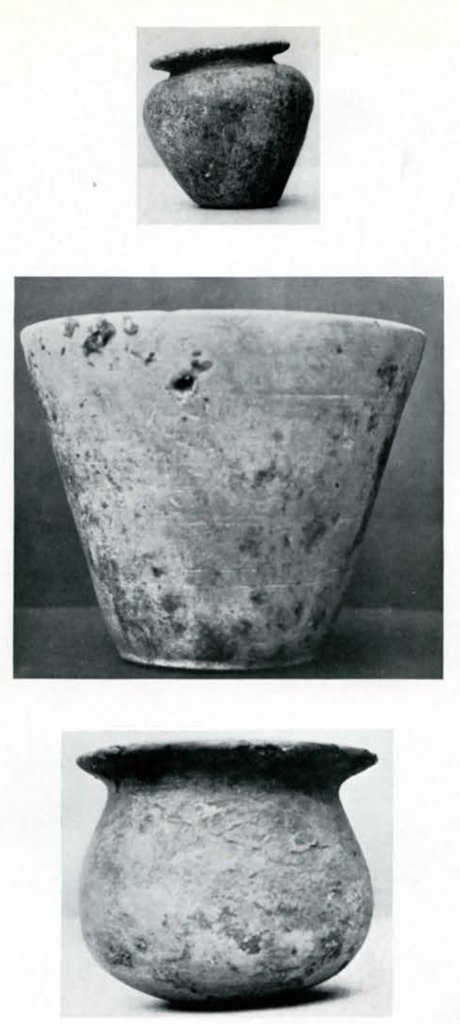
Image Number: 101428A
Stone Vessels:
The attractive alabaster cup or bowl illustrated in Plate XVIII, 2 was close to the heads of a male and a female skeleton lying in one grave. Stone vessels seem to have been much valued by the Early Sumerians. Complete vessels are rather scarce. Now and then one stone pot is found in a grave that contains a great number of pottery vessels. Stone vessel fragments however are quite frequent. Some show perforations along the fracture, indicating that the particular vessels had been repaired by their owners. None of the “common type” pottery vessels show repairing holes. To be sure, it took considerably more work to grind out a stone vessel by means of the convex discoid stone grinders used for this purpose, as compared with the making of a clay pot. Besides that, every bit of stone had to be imported from more or less distant localities.
We illustrate two more small stone jars [Plate XVIII, 1, 3] in addition to an interesting pigment cup with two depressions [Plate XIX, 1, 2]. Personally we found no traces of paint in this particular vessel but its purpose was determined by the German excavators, who found identical vessels with remains of paints.
Objects of Shells:
We did find “paint cups” of another type, namely natural shells [Plate XIX, 3], containing traces of purple, red, orange or yellow, black, and green pigments. But these paint cups have rather the character of portable little vanity boxes (without lids) than of stationary pigment containers. Such shells accompanied several skeletons. A (doubtful) male bad a shell cup with white paint, and a female was supplied with a shell containing light yellow pigment. We assume with Koldewey and Andrae that the paint cups of stone and particularly those of shell were used for body or especially for facial decoration.
Ornaments:
In addition to shell pendants and beads of shell great numbers of stone ornaments, such as discoid, tubular, globular beads of Lapis Lazuli, rock crystal, cornelian, smoky quartz, coral, granite, occurred; further similar beads of bone and clay. Perhaps the most attractive ornaments are pendants of rock crystal illustrated in Plate XIX, 4. We took great pains to determine if possible the sequence of those beads still adhering in string sections at the necks of certain skeletons. The upper one of the strings illustrated in Plate XX, 1 is in the original order, while the lower beads are arbitrarily connected. We were somewhat disappointed not to notice any particularly neat arrangement, as to colors or shapes. The owners of these necklaces seem to have paid more attention to the beauty and the material value of the individual beads than to the artistic effect of the whole ornament. A necklace of less valuable material, clay, is shown [Plate XXI, I] in situ where it may have been lost or cached away. The biconoid beads had perhaps been dipped in bitumen as suggested by their black exterior coating.
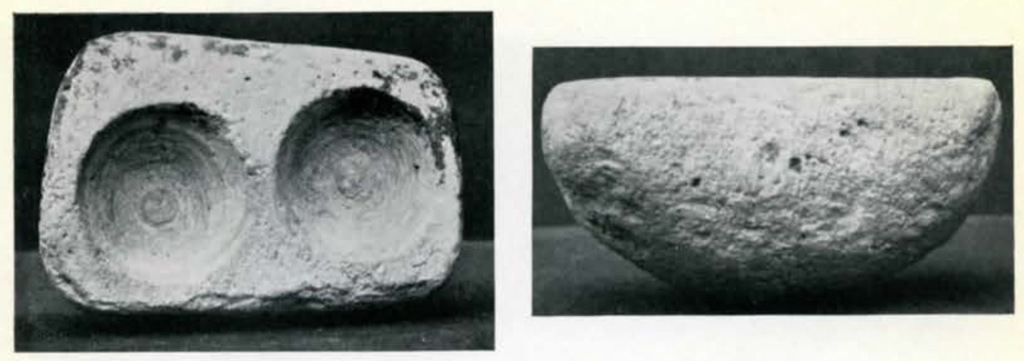
Museum Object Number: 33-13-346
Image Number: 101436A
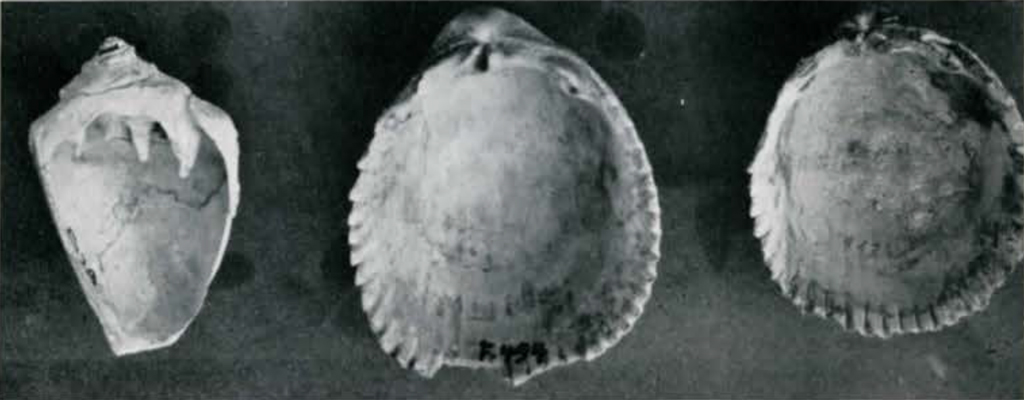
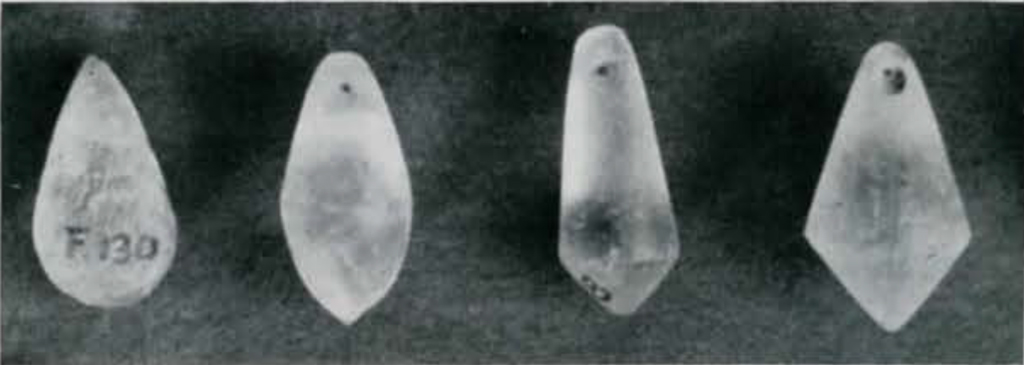
Metal Objects:
Even when Fara ceased to exist as an inhabited site, the Iron Age was still a thing of the distant future. The Fara III town may or may not have known bronze. Chemical analyses of the metal objects will tell us that. Fara II is still almost certainly a Copper Age stratum, judging from the commentaries of other archaeologists who refer to this question. Again the chemist will have the final word. We saved lumps and fragments of assumed copper of all depths, to have them defined as to their contents of tin, Outwardly the bluish green oxide of the curved dagger (P) blade [Plate XX, 2], the long awls [Plate XXI, 2], fish hooks and other objects not illustrated, can either indicate copper or bronze, that is, an alloy of copper with more than 10% of tin.
Stone Objects:
In addition to metal implements and weapons, the settlers of Fara II still used certain flint objects of their neolithic ancestors. We found great numbers of plain chalcedony flakes used as knives, and others with one serrated edge used as saws. In two instances saws were found in their original setting of bitumen. The series of stone objects includes further, the omnipresent mullers and hand grinders, several varieties of weights, polishing stones, and the like.

Museum Object Numbers: 33-13-544
Image Numbers: F284, 243825A

Fara I: The Painted Pottery Age
(Jemdet Nasr)
In the chapter on the general excavation we described how we found an alluvial layer at a depth between four and five metres below the mound surface. Koldewey’s excavation party noticed apparently the same layer at the tell margin. There need, therefore, be no doubt about the character of the nearly sterile deposit; but we have to leave it to the imagination of the reader, whether “the flood stratum” of Fara accumulated during one or several catastrophic inundations caused by the rising of the sea or the Two Rivers, or both combined with extensive precipitations. The shore of the Persian Gulf was then only sixty miles from Fara while today the mouth of the Shatt el Arab is more than two hundred miles away.
One of our most interesting problems is now: Has the rising of the waters completely destroyed towns, men and beasts? Has the culture, existing prior to this event been completely erased at this locality, or, speaking archaeologically, is there an absolute culture break expressed by the total difference between the remains below and above the alluvial layer? We have to answer “Yes and No,” while interpreting our information.
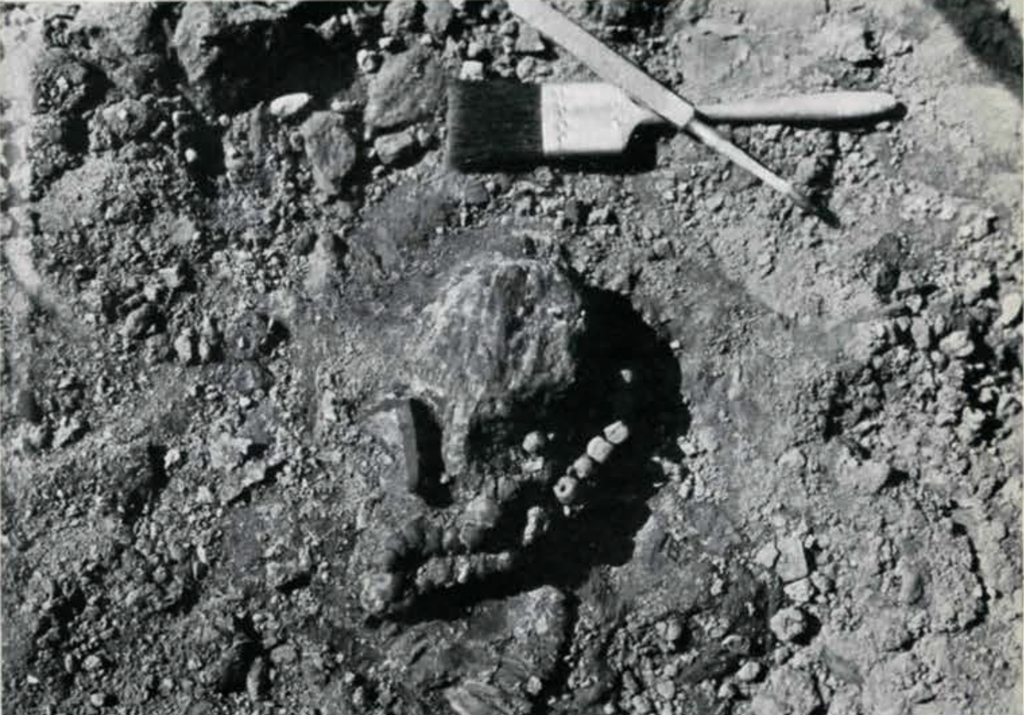
Image Number: 101398A, 101399A

Fara I, the painted pottery stratum, distinct in most respects from Fara II, is definitely situated below the alluvial layer, while only a few objects of this period, namely one stamp seal and some sherds “floated” in the refuse above. In this respect an absolute culture break took place. But our next point is much more significant. It is not only of local importance as a chronological feature. It has direct bearing upon the very acute question as to the earliest history of the Sumerians in Mesopotamia.2 We firmly believe that the invasion or infiltration of the Early Sumerians (Fara II) into Mesopotamia took place during the Jemdet Nasr period (Fara I). We believe that the Fara I and II peoples were utterly distinct, culturally, linguistically (see Speiser) and perhaps racially. Our archaeological criteria suggest that the Early Sumerians and the Jemdet Nasr people lived side by side or intermingled to a certain extent without adopting each other’s culture. As far as our information goes, there are no evolutionary relations between the Jemdet Nasr culture of Fara and that of the Early Sumerians. The Jemdet Nasr culture dies out while the implanted Sumerian culture survives and develops.
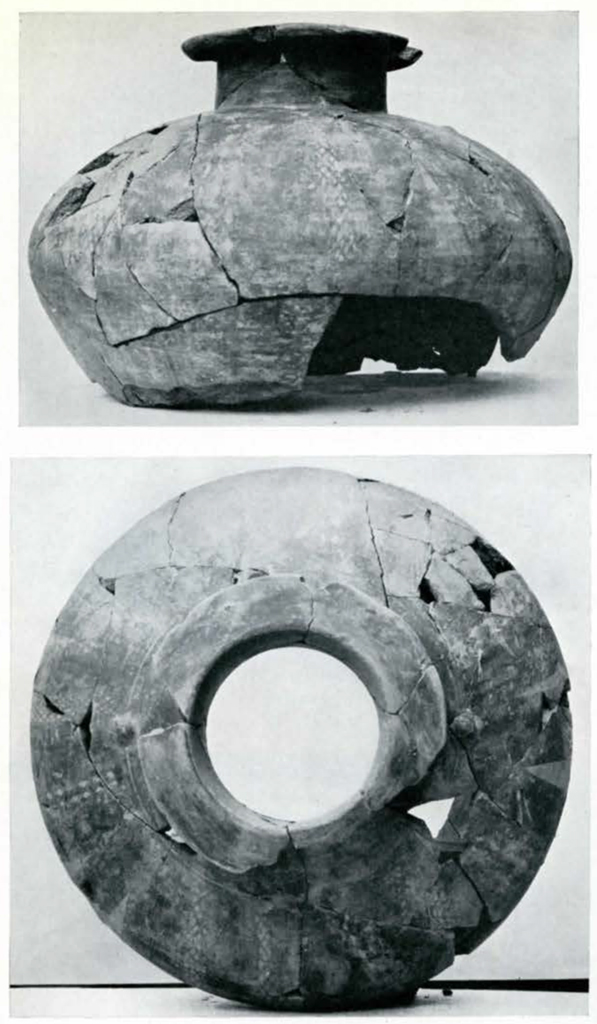
Image Numbers: 101543, 101539
At present we have only two striking criteria to support our conclusions. In the find level of the Jemdet Nasr polycrome vessel here shown [Plate XXII], and side by side with the purplish-red slipped vessel of this time we found series’ of our typical unattractive Fara II bowls and quite a number of sherds which we were not able to distinguish from the ceramics of Stratum II. Further, not less than five seal cylinders of very archaic type [Plate XXIII, 2, 3, 4] occurred in the Jemdet Nasr stratum and on the very levels with ten incised stamp seals of scaraboid form [Plate XXIII, 8, 9, 10]. We do not hesitate to attribute the stamp seals with their primitive geometric patterns to the indigenes of Stratum I. The uppermost stamp seal, showing an exceedingly conventionalized quadruped(?) in drill technique occurred at 4.60 metres of depth, corresponding, at this point to the top of the alluvial layer. We consider the seal cylinders with incised and drilled conventionalized animals and with rather intricate geometrical designs to be seals of the earliest Sumerians. The uppermost seal cylinder with geometrical pattern occurred at 4 metres of depth, while the later Fara II cylinders and impressions show rather naturalistic animal figures and Gilgamesh—Ea-bani scenes. We are convinced that the continuation of the work at Fara will amplify our information in respect to other categories of objects. We expect the duality of the two features above explained, that is, Jemdet. Nasr pottery with Sumerian pots, stamp seals and seal cylinders, to be paralleled by other dual traits, such as two kinds of weapons, architecture and the like. The relations of the two cultures form an exceedingly interesting and important problem.
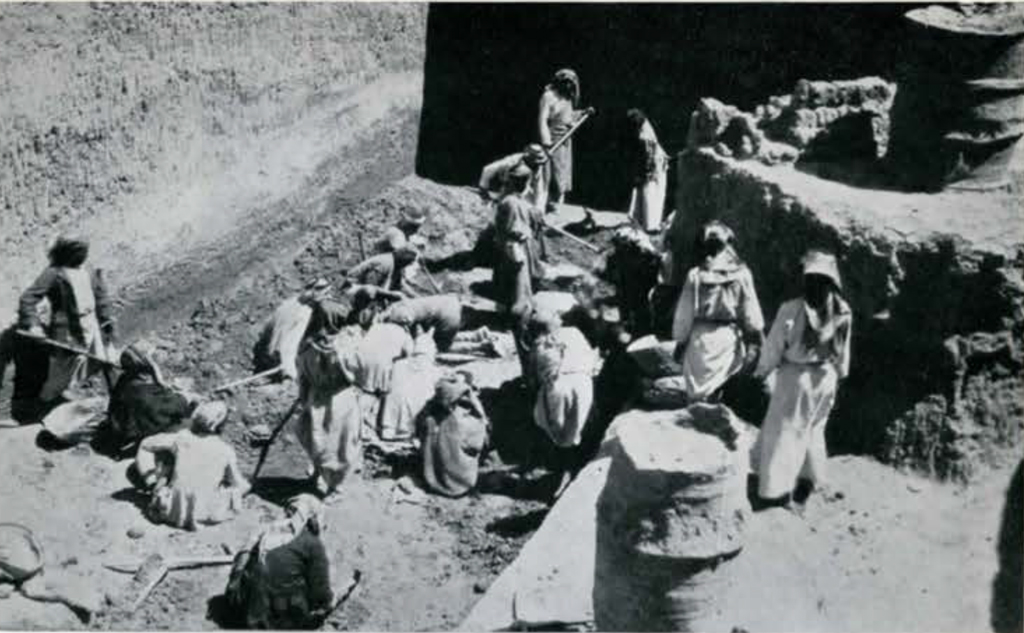
Image Number: 243848A
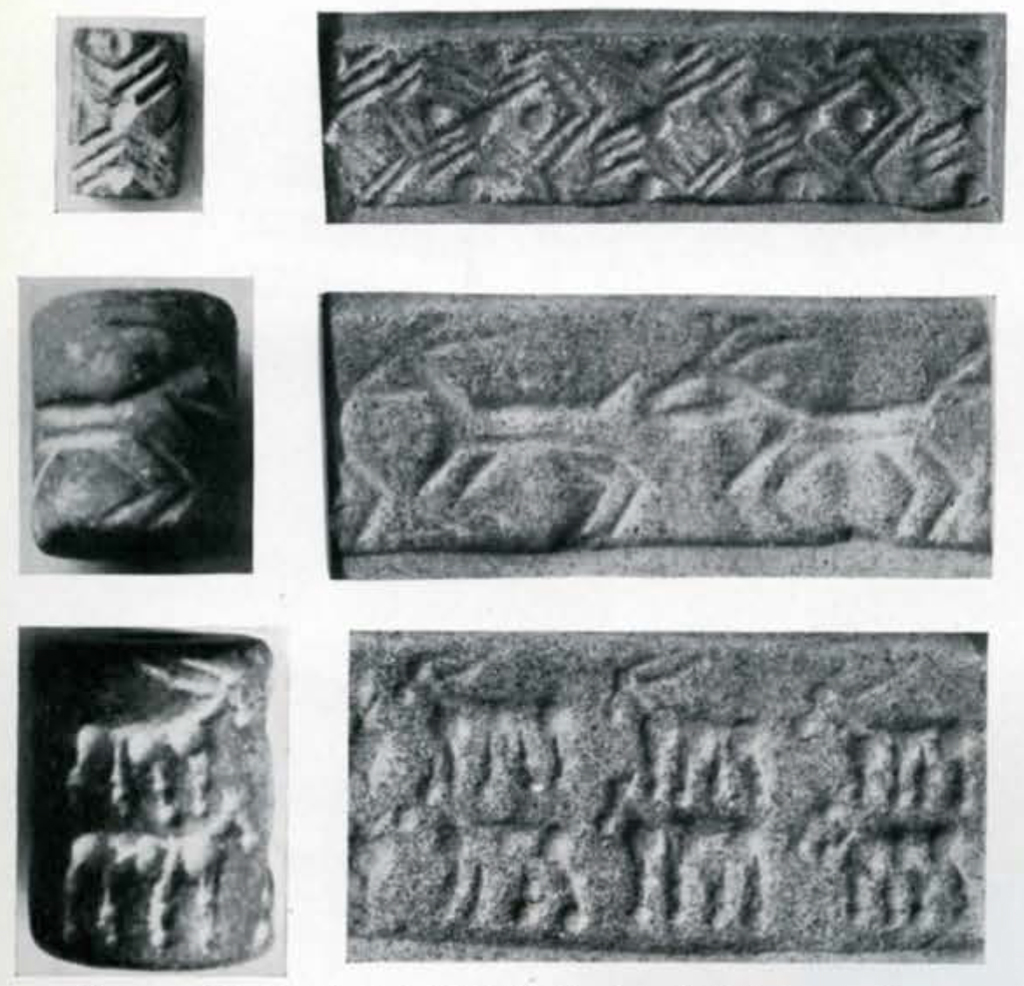

Other Finds of Stratum I
Except for some patches of discolored dirt which may or may not have been wall remains, we found no traces of architecture in the small test area examined; but “pots and pans” vessels and grouped implements of stone stood on a definite floor level where they had been deserted more than five millenia ago. This brings us once more to a question raised in the beginning of this chapter: Have buildings and living beings perished during the inundation period? We must admit, we do not yet know. We found no remains of human beings or animals suggesting an abrupt end. Two skeletons of orderly buried persons, each with a small jar of this period at the head end, were imbedded in the stratum. If more extensive excavations will not uncover remains of human beings or animals that perished during a general catastrophe, we must assume that the population was warned and fled or that the end of the Jemdet Nasr settlement at Fara was not due to the inundation period but approximately coincided with it. To be sure, while uncovering the fertile Stratum I floor level below the alluvial layer we gained the impression that the population had hastily deserted their homes leaving their belongings behind.

Museum Object Number: 33-13-7
Image Number: 101515, 101516
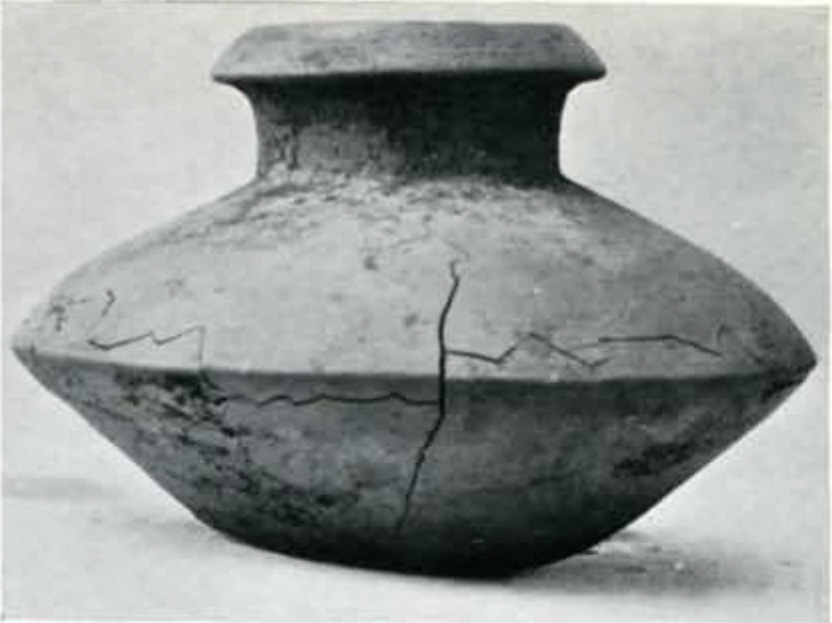
Image Number: 101520

Image Number: 243974
The Pottery:
The Jemdet Nasr people of Fara were either more imaginative pot makers than the Early Sumerians or the baked clay vessels were more greatly valued by them. In addition to a variety of pleasing forms, the artist had at his disposition monochrome, bichrome and trichrome decorations of pleasing though rather simple geometrical designs. But we found fragments also of conventionalized animal patterns [Plate XXIV, 4, 5].
Our most striking type vessel of this period is a trichrome or polychrome jar [Plate XXII] found at 5.35 metres. The buff surface is largely covered with a purplish red paint coat. While applying the red paint, certain panels of the original surface were left blank to be bordered and subdivided by black lines into triangles and series of lozenges which were again filled in part with dashes of red paint. Four knobs protruded from the shoulder. Sherds of similar vessels occurred in the same stratum; but there were also pot fragments painted with brown or brown red bands, or geometrical figures or with animal patterns on light buff or brown surfaces.
Vessels obtained in Stratum I include, further, a small pitcher with conical spout and banded decoration [Plate XXIV, I, 2], a small green colored jar with bi-conoid body [Plate XXIV, 3], a small jar with hemispherical lower body and oblique incisions [Plate XXV, I], and several very pleasing “suspension jars,” purplish red or light gray brown with four triangular cord handles on the shoulders [Plate XXV, 2]. The latter pot form is identical with vessels attributed to the al ‘Ubaid period, supposedly preceding the Jemdet Nasr culture. Certain sherds also occurring in Stratum I resemble al ‘Ubaid designs but we have not yet an absolute clue for the presence of a definite al ‘Ubaid stratum at Fara. The pitcher shown in Plate XXV, 3 was also found in our lowermost stratum. It is unique, but it resembles the Fara II wares. As to the “common type” bowls found in the Jemdet Nasr layer, the photograph of the Fara II bowls [Plate XIV, 4, 5] illustrates them as well.
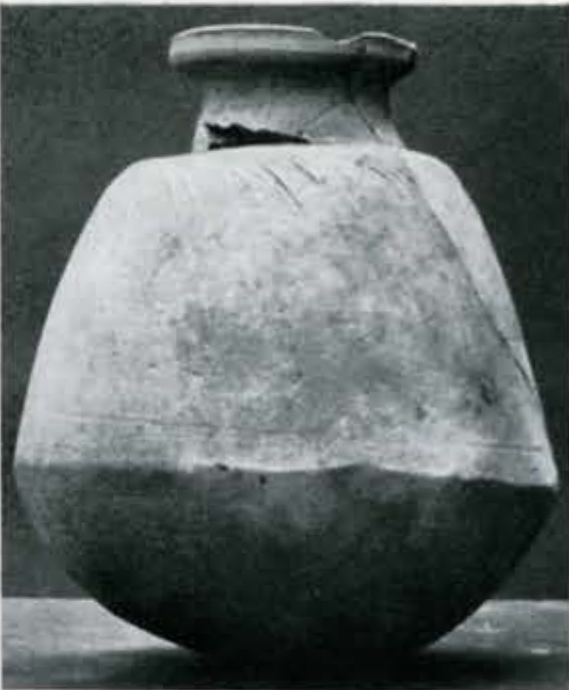
Image Number: 101511

Museum Object Number: 33-13-5
Image Number: 243941A
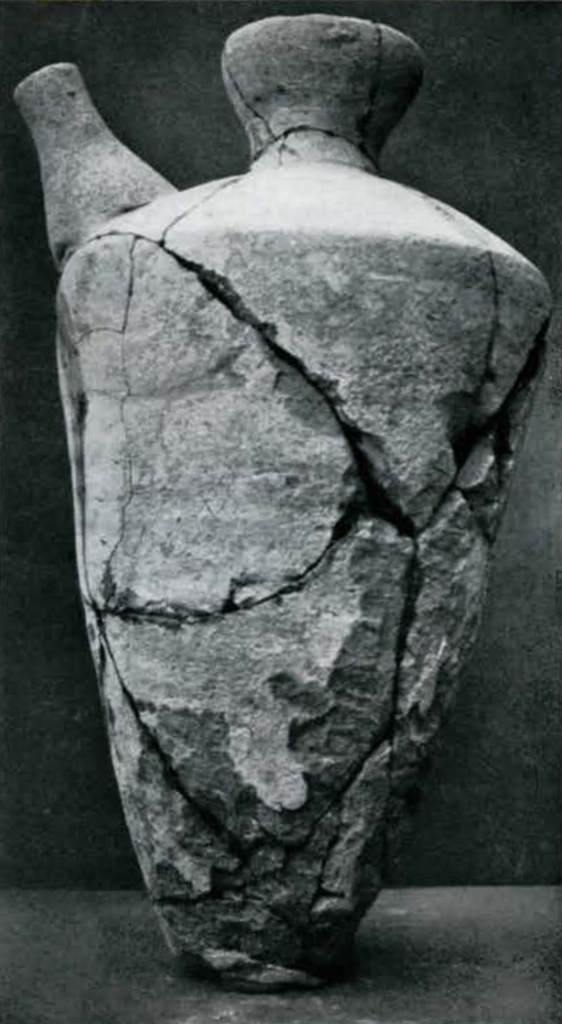
Museum Object Number: 33-13-8
Image Number: 101534
Stone Vessels:
Shallow, well wrought plates of rectangular or trapezoid form [Plate XXVI, 1] were only found in the stratum under consideration; but the heavy globular jar with broad discoid rim [Plate XXVI, 2] reminds one of the stone vessel illustrated in the chapter on Fara II.
Miscellaneous Objects of Stone, Pottery, Bone, and Metal:
There is an interesting though problematical diorite object modeled in the form of a six fingered hand [Plate XXVI, 3]. Its socket indicated that it was attached to some device. As a mace bead, however, it was not large and heavy enough. Otherwise, mace head fragments of globular(?) or pear shaped (P) specimens occurred in Strata I and H. Fragments of pottery sickles were frequent in the Jemdet Nasr layer. The work in bone is illustrated by a polished bone slab with chisel edge and a neatly incised spindle shaped object [Plate XXVII, 1]. The lance head or short dagger (?) blade [Plate XXVII, 2] shows that the working of copper was well advanced during the earliest Fara period.
The Burials:
We found only two graves attributed to Period I. In both cases a small jar stood close to the skull [Plate XXVII, 3], and Skeleton x-16 lying in the very bottom refuse of the mound deposit, had the most elaborate necklace found during our test. Both skeletons lay on their right side. The legs of one person had hardly been contracted, while those of the second skeleton were flexed as closely as the legs of numerous Fara H skeletons. The continuation of the excavation on a larger scale will doubtless furnish a number of fairly well preserved skulls and other bones of all Fara periods. The physical anthropologist will then be able to tell us whether the people of the Jemdet Nasr period were racially as distinct from the Early Sumerians as they were culturally. He may be able to tell us to what extent racial mixture took place and where the original foci of their racial affinities and diffusions are situated, thus supplementing the work of the archaeologist and the philologist.
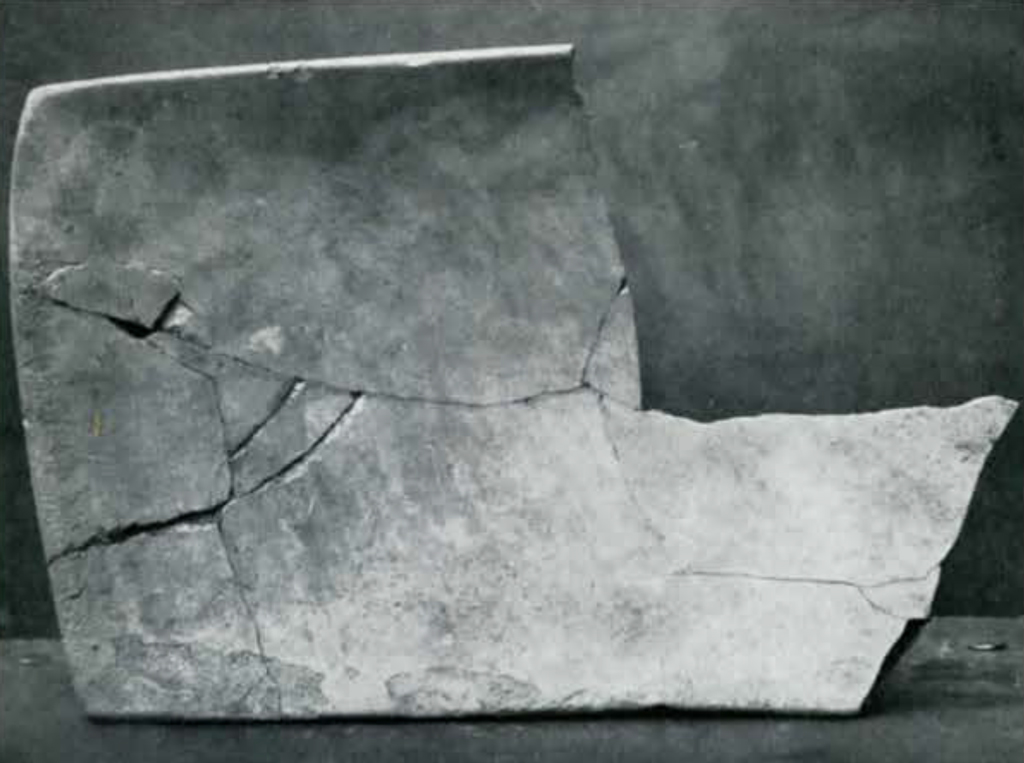
Museum Object Number: 33-13-89
Image Number: 101519
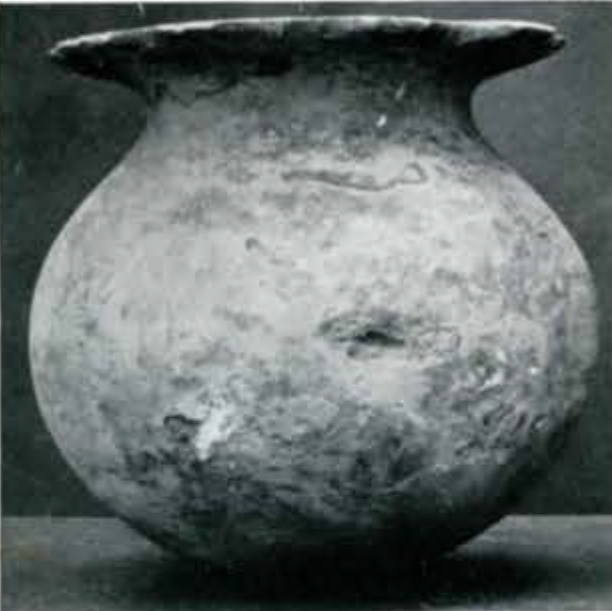
Museum Object Number: 33-13-345
Image Number: 101513
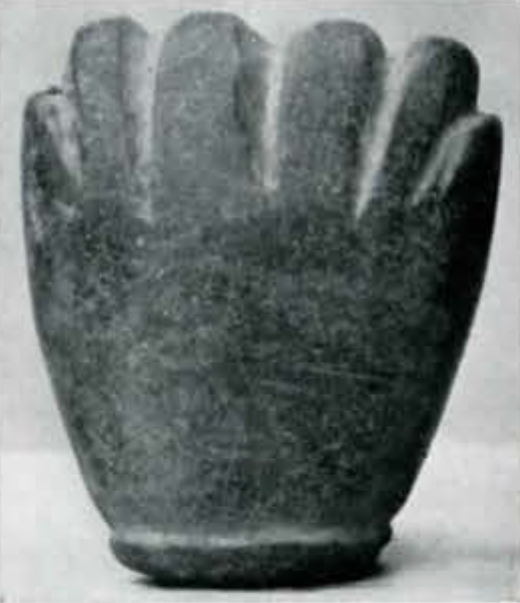
Image Number: 101559A
Summary
Results, History, and Legend
While excavating a minimal patch of the extensive Fara mound, we succeeded in getting a reliable miniature cross-section of the great tell’s life. Its principal age phases are defined by our culture strata, Fara I, II, and III, corresponding to three broader culture horizons of Mesopotamia, namely the Jemdet Nasr Period, the Early Sumerian Period and the Period of the Third Dynasty of Ur.
In our first chapter we explained the aims of our test, the methods of approach and the general course of the excavation. Then we defined the contents of the mound strata determined during the test and we showed examples of the principal “guide fossils.”
It is clear that the pottery was our most faithful and reliable guide. Painted jars define Stratum I, plain bowls, pitchers and cups of characteristic form guide the excavator through the thick Stratum II, while elaborations, such as offset bowl rims and certain spouts characterize Stratum III. Archaeologically next in importance comes our collection of seals and seal impressions, including, at the same time, our artistically most striking finds. There are primitive little “scaraboids” associated with Stratum I in the same manner as extremely archaic seal cylinders which we attribute to the Sumerian newcomers. The seal cylinders of Stratum II continue the early series and climax in the two beautiful figures of our Fara II Sumerian and the “standing bull.” In Stratum III, finally, we find the symbolism of the seated deity foreign to the earlier patterns.
Now already other categories of finds, such as our attractive Period III figurines, stone vessels, ornaments and other objects of pottery, stone, shell, and bone, not to forget the remains of human beings and animals, promise to fall in line with pottery and glyptic to form impressive series’ illustrating the individual culture phases and their interrelations and linking them up with the Mesopotamian culture foci of their time.
Within the strata of their occurrence, our cuneiform tablets are historically the most significant finds. Stratum I is not yet represented by written records. Judging from the excavators’ experiences at the site of Jemdet Naar and at Warka, for instance, we expect that the forerunners of cuneiform writing, namely pictographic records will also be found in the Jemdet Nasr stratum of Fara. We are extremely curious whether such writing will be found associated with pure Jemdet Nasr remains, with mixed Jemdet Nasr and earliest Sumerian objects, or with pure material of the Sumerian intruders within the stratum of the indigenes. We are convinced that the question as to relations between the earliest Sumerians and the Jemdet Nasr people (presumably Elamites) can largely be solved archaeologically.


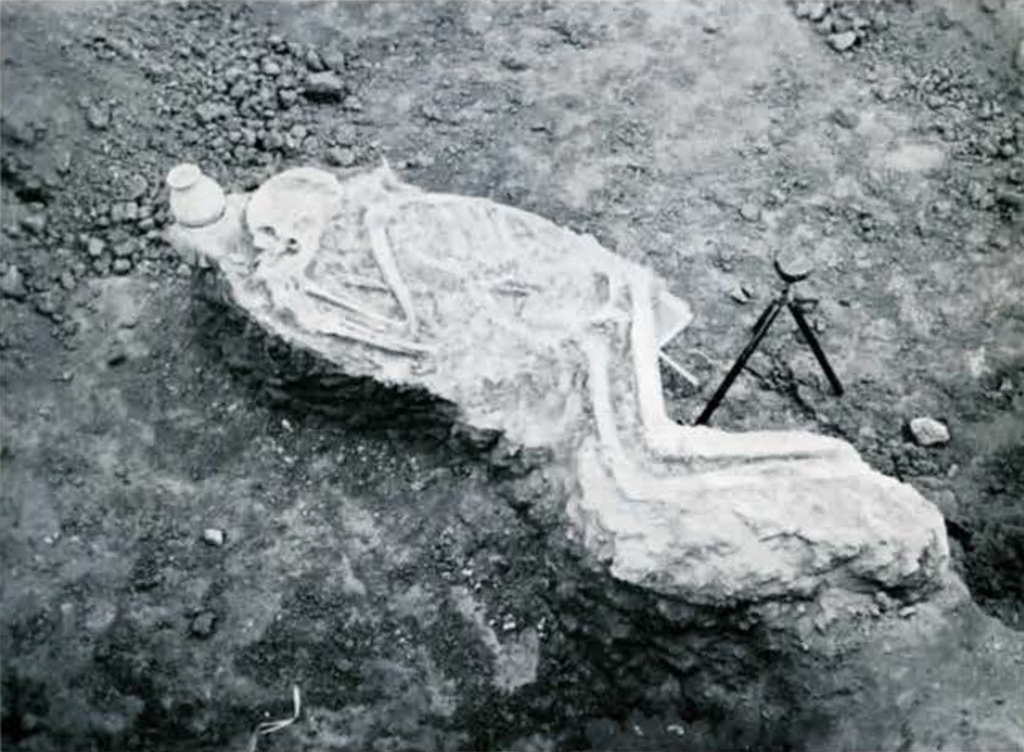
Image Number: 244045
Nearly all our cuneiform tablets were found in Stratum II. The find conditions prove that these records belong to the last sub-phase represented by less than two metres out of a total of about 4.50 metres of culture deposit accumulated during this time. In addition, we have the massing of burials in the top layer suggesting extensive secondary use of parts of the site as a necropolis during the final phase of Fara II and we have fairly distinct types of bricks at various depths (Pit I in FG 43, and Wall in DE 39). These facts must be considered while dating the stratum by means of the tablets. In the opinion of our co-worker, Dr, Kramer, the Fara II series of tablets should be dated between the 29th and 27th centuries. The deposit of Stratum II and particularly that phase of the Early Sumerian period overlapping with the Jemdet Nasr period must necessarily be dated considerably earlier than the tablets, thus carrying us far into the fourth millenium. We may not be far wrong if we estimate the duration of Period II from about the middle of the fourth millenium to the beginning of the Sargonide period (about 27th century). The Jemdet Nasr period (I) would thus fall into the first half of the fourth millenium, its final phase overlapping with the beginnings of the Sumerian culture in Mesopotamia and its end coinciding at Fara with an inundation period the deposits of which we found on top of its remains.
As to Fara III, our archaeological criteria for the presence of a stratum of this period were explained above. However, had it not been for Tablets F-973, and F-750, we would not have been able to date Stratum III as accurately as it can be done now. On the other hand our archaeological information about Fara HI has a direct bearing upon the question which we have hardly touched as yet, namely the ancient name of the site of Fara, supposedly “Shuruppak.” Had we not found a definite clue for the presence of a settlement during the time of the Third Dynasty of Ur, Fara could not be Shuruppak; for a number of records, explained in the commentary of Dr. Kramer, refer to this town as definitely existing during the period under consideration. Further the presence of a Fara III deposit, somewhere on the extensive site checks to a great degree of probability the origin of the significant record found by the German excavators: namely a cuneiform inscription of Haladda, Patesi of Sukurru (Shuruppak). As an additional criterion for the identification of the site we may mention the frequency of the name “Sukurru ” in the Fara tablets as a whole, as suggested by our co-worker, Dr. Kramer.
Mythology, even, seems to fall in line. Shuruppak is mentioned as one of the “pre-diluvial cities” of Mesopotamia, and mythology lets the city play an important role in the disaster by considering Shuruppak the home of Ut-Napishtim, the Sumerian Noah. Let us try to interpret the legend rationally and correlate it with our experiences. The tradition means to say that Shuruppak has been inhabited in remote antiquity prior to the memory of man (namely that of the Sumerians). Our archaeological evidences concerning the Jemdet Nasr stratum, together with the philological considerations showing that the city name is Elamite, prove the high antiquity of the site, and suggest definitely that the occupation of the site reached “beyond the memory of the Sumerians.” Further, the Mesopotamian Flood story and, going a step farther, that of the Bible, seems to be based on a very real event or a series of such, as suggested by the existence at Ur, at Kish, and now at Fara, of inundation deposits, which accumulated on top of human inhabitation. There is finally “the Noah story,” which may possibly symbolize the survival of the Sumerian culture and the end of the Elamite Jemdet Nasr culture. At Fara, at least, the end of the latter, seems to coincide with an inundation period, though it is not necessarily due to it.
Some of our last considerations are purely “plays with thought.” They do not try to make history out of mythology, but they show interesting parallels between the facts which we dug out of our test squares and the Shuruppak legend, referring most probably to our site.
1 “D” signifies the WEST-EAST series of 100 meter quadrants, “E” the NORTH-SOUTH series, “DE” the quadrant in which the 2 series overlap; while the 10 meter squares are determined in the same way. All maps are oriented toward the NORTH.↪
2 We may refer at this point to Dr. E. A. Speiser’s valuable and scholarly dissertation on Mesopolamian Origins.↪


